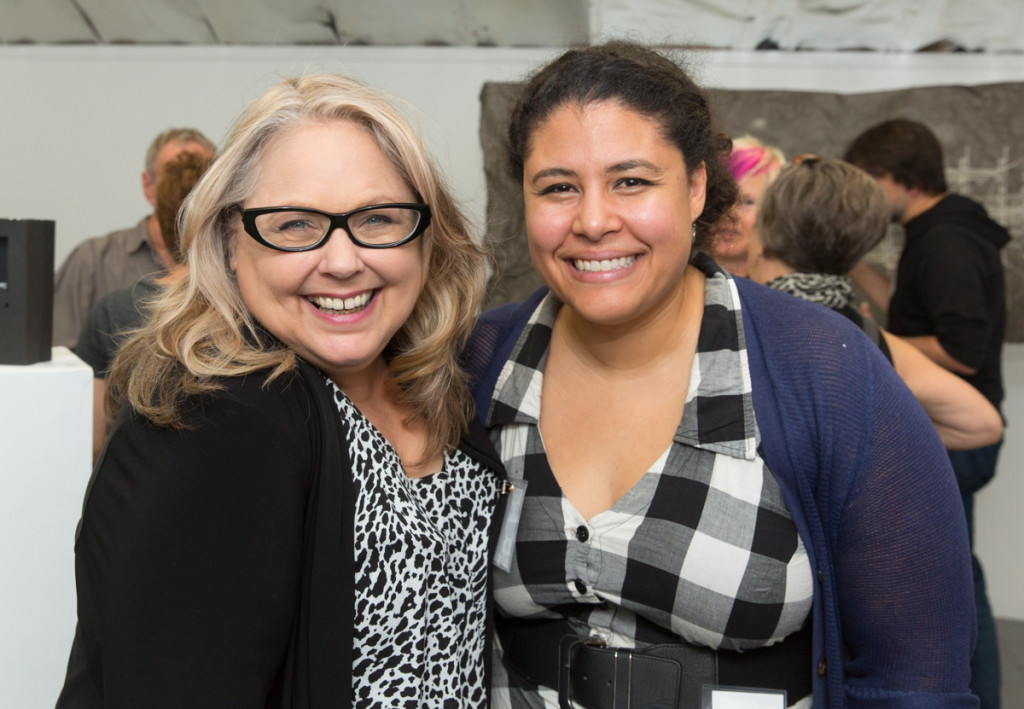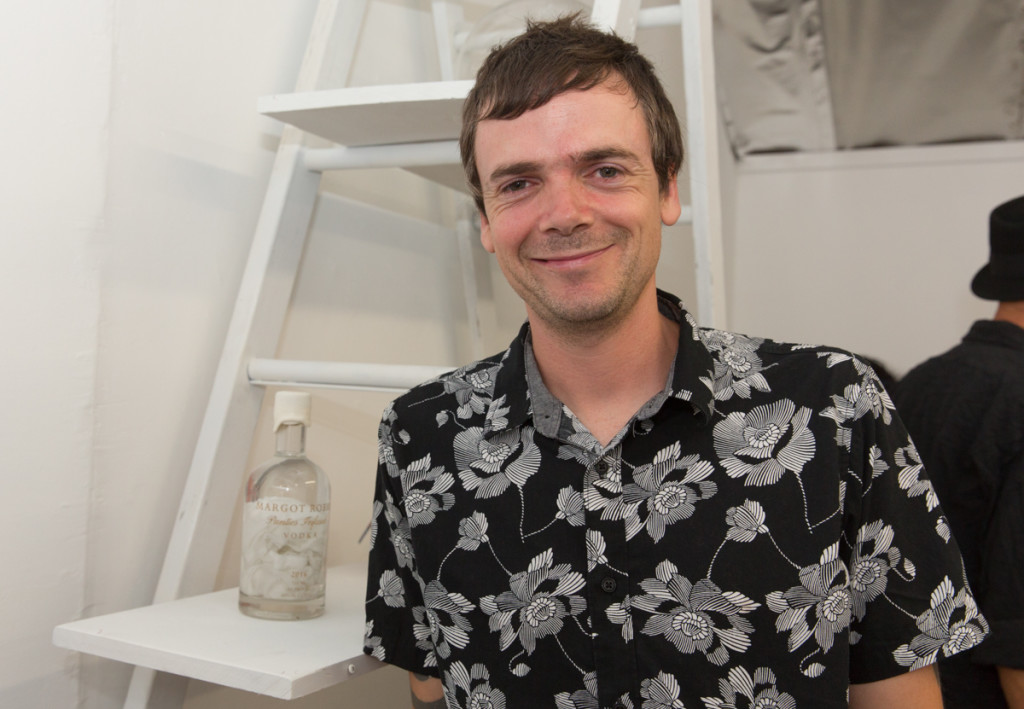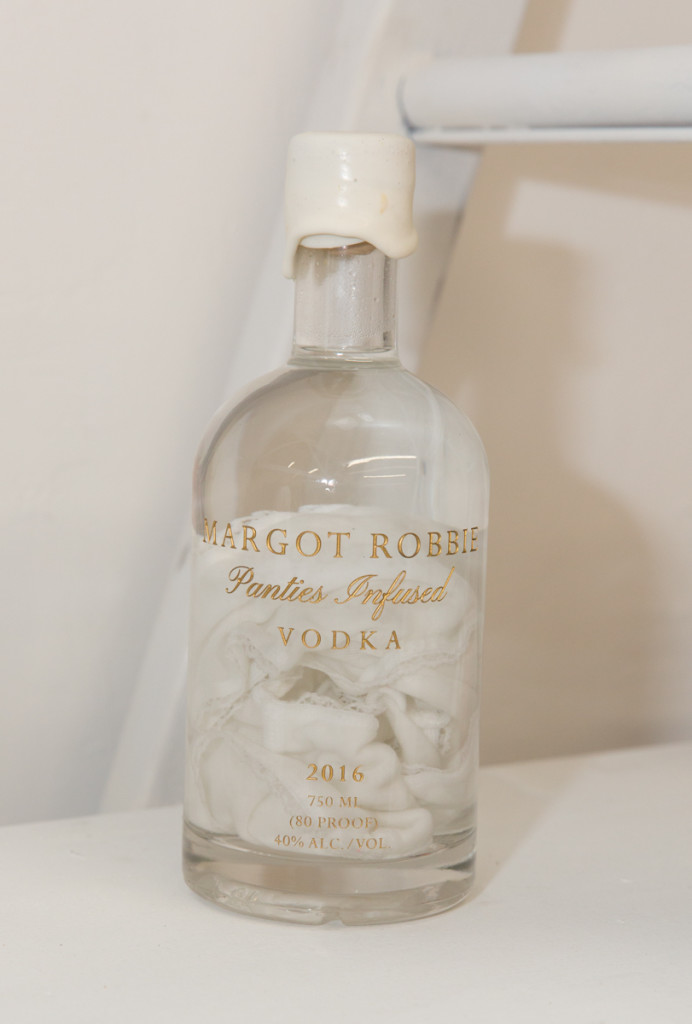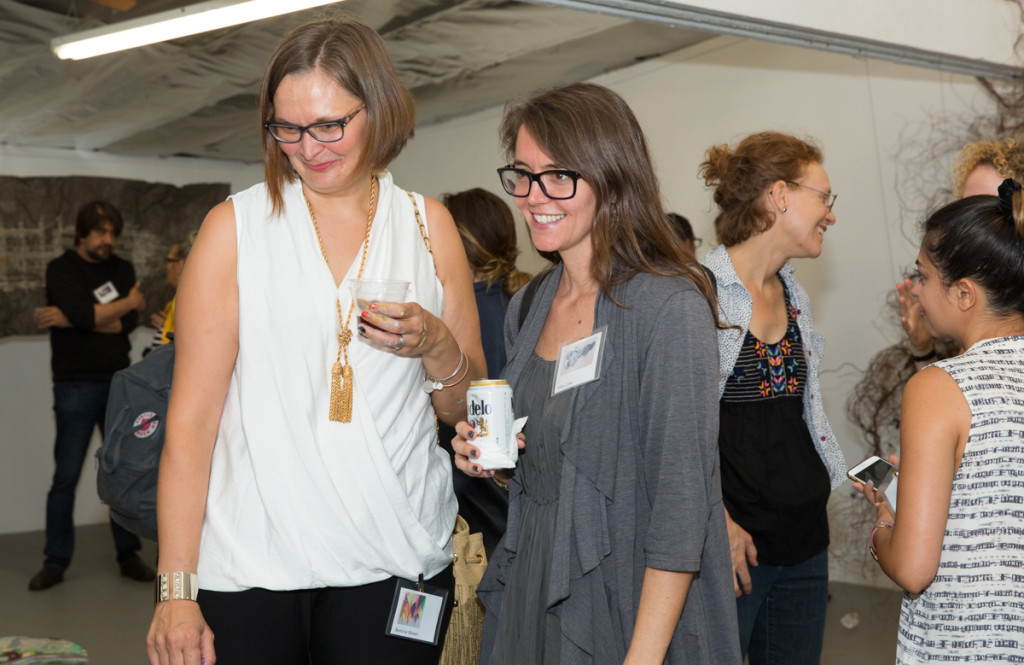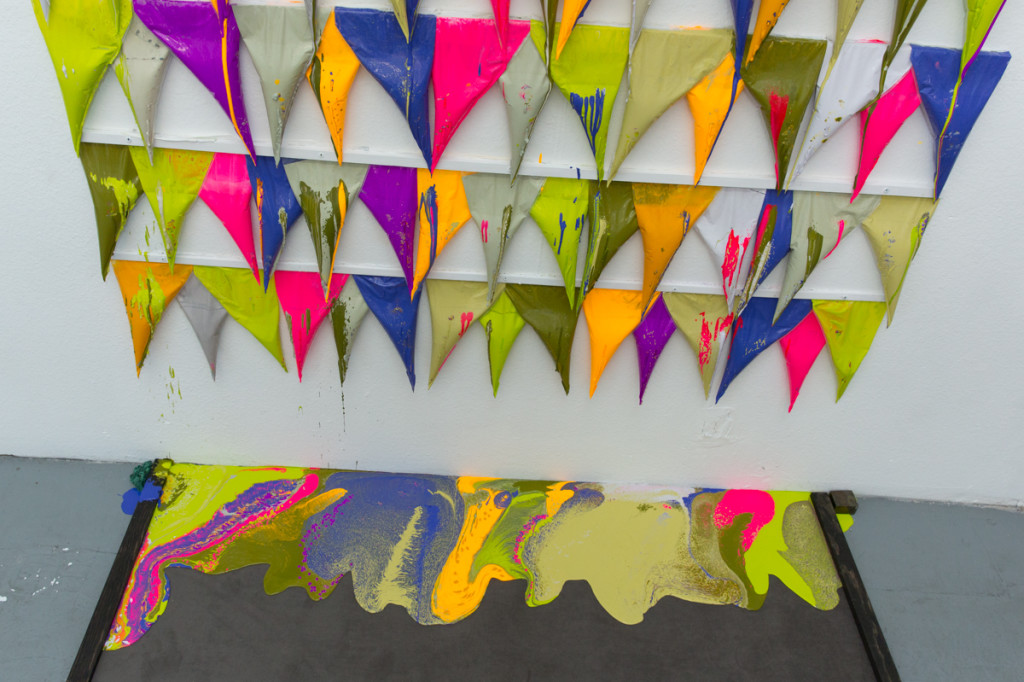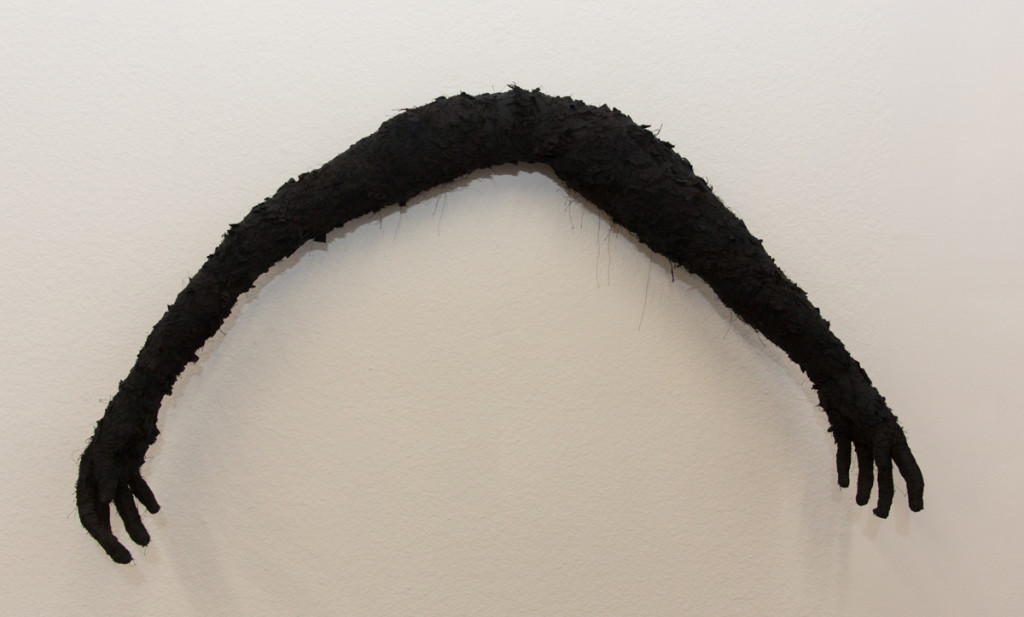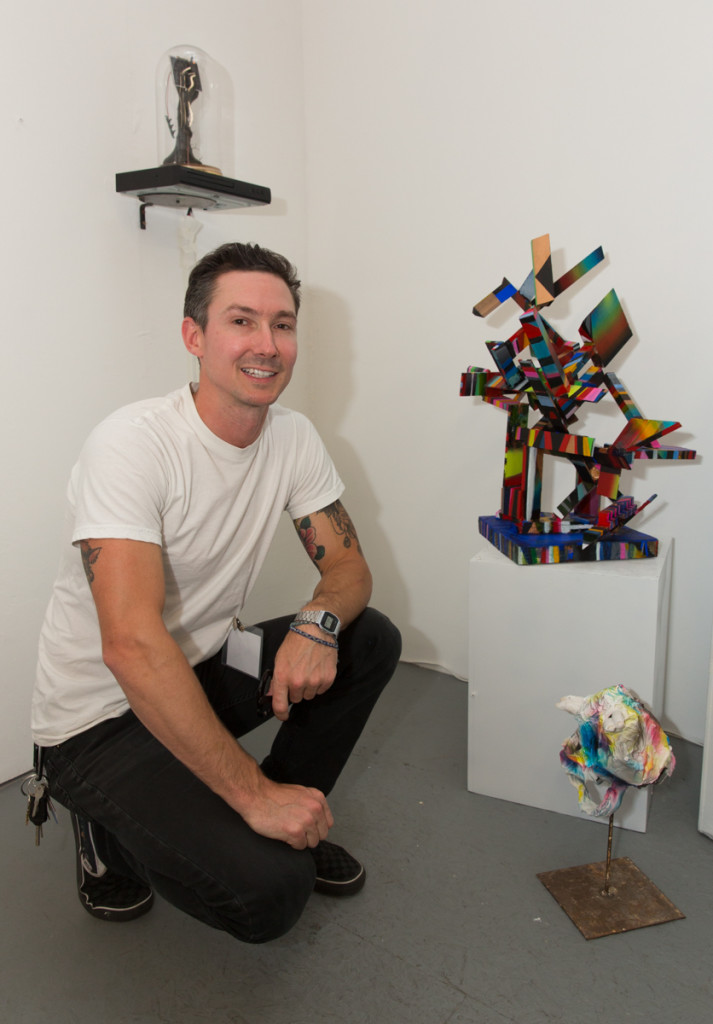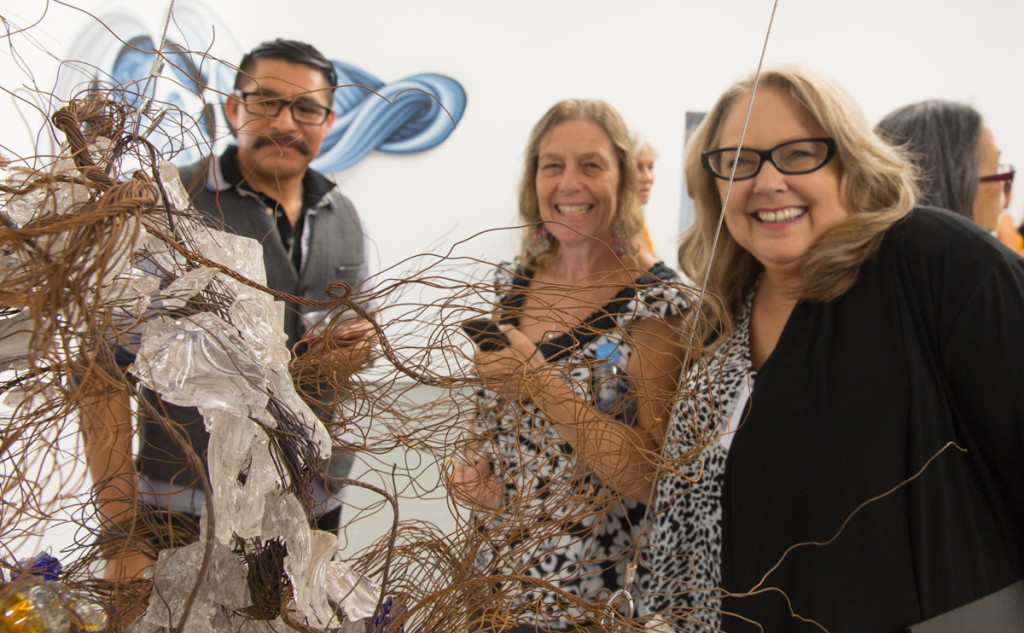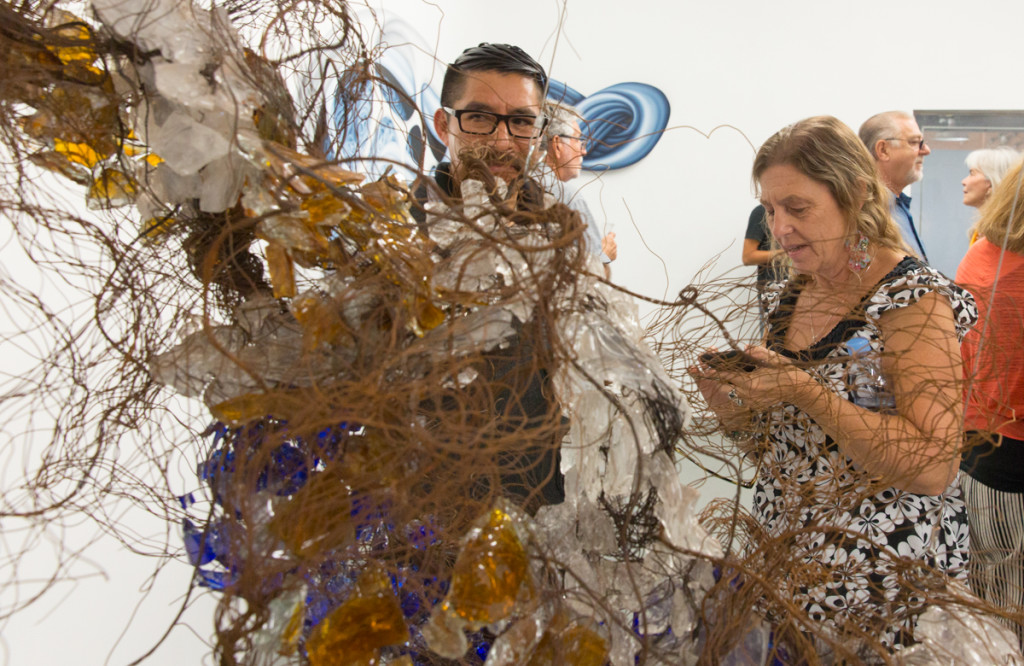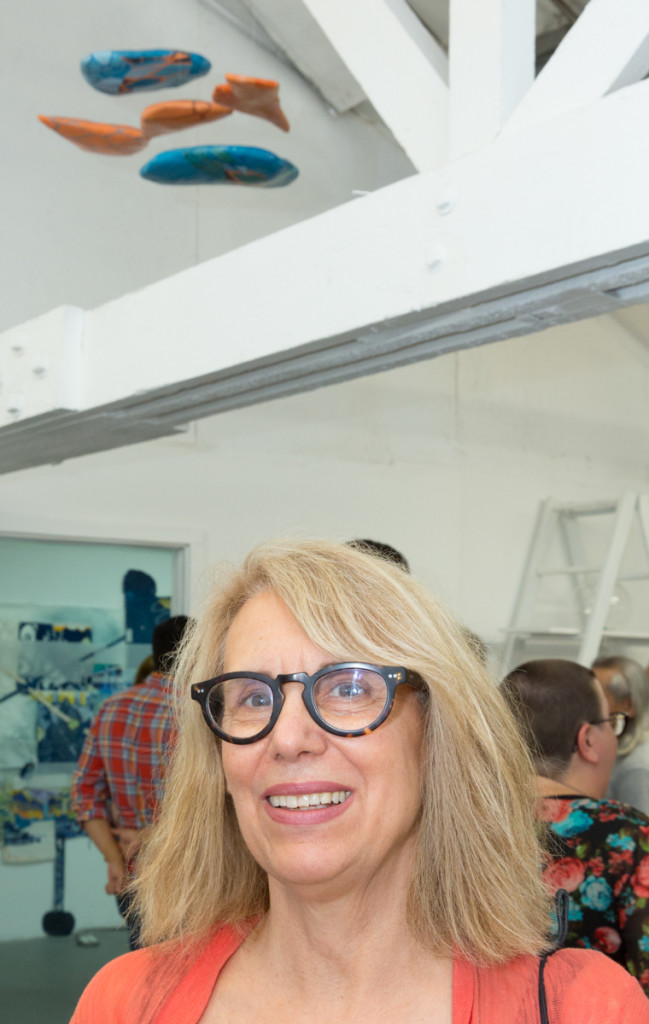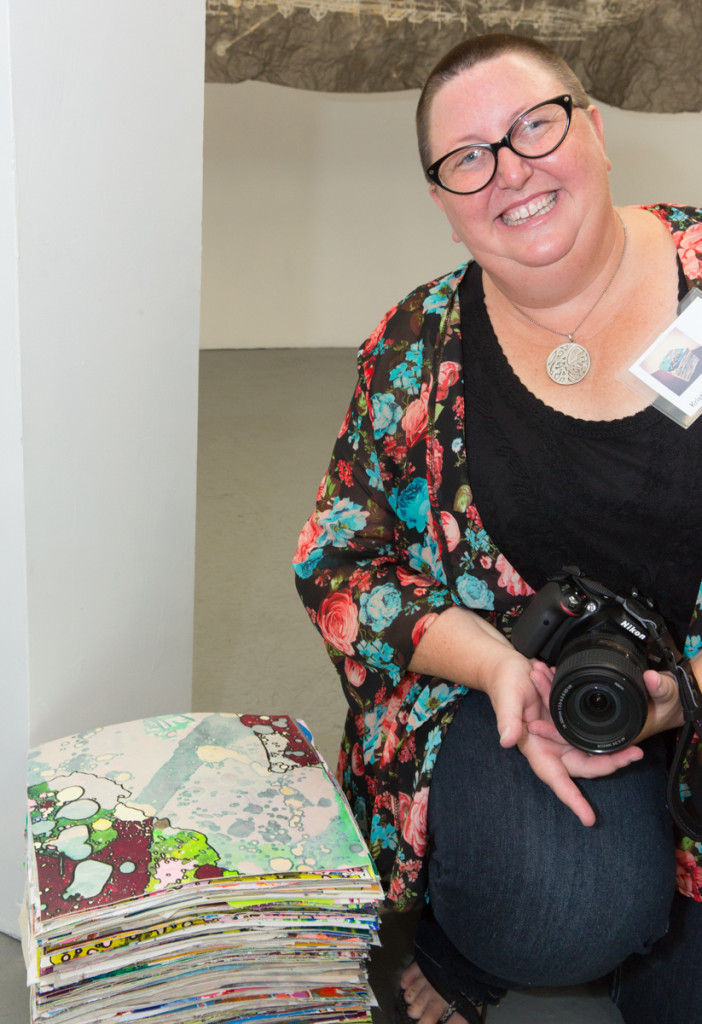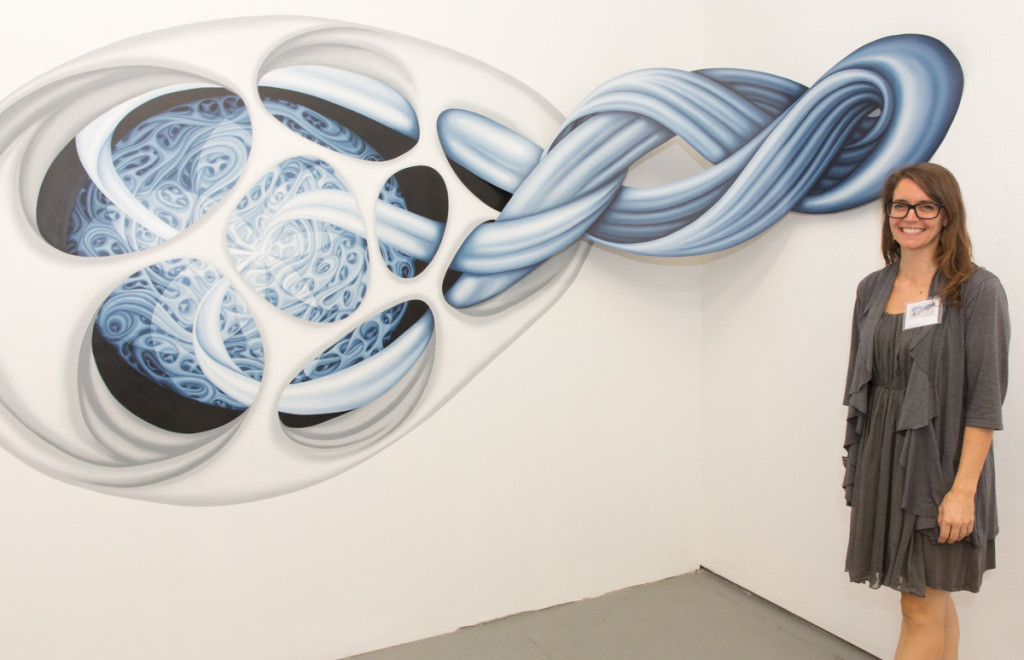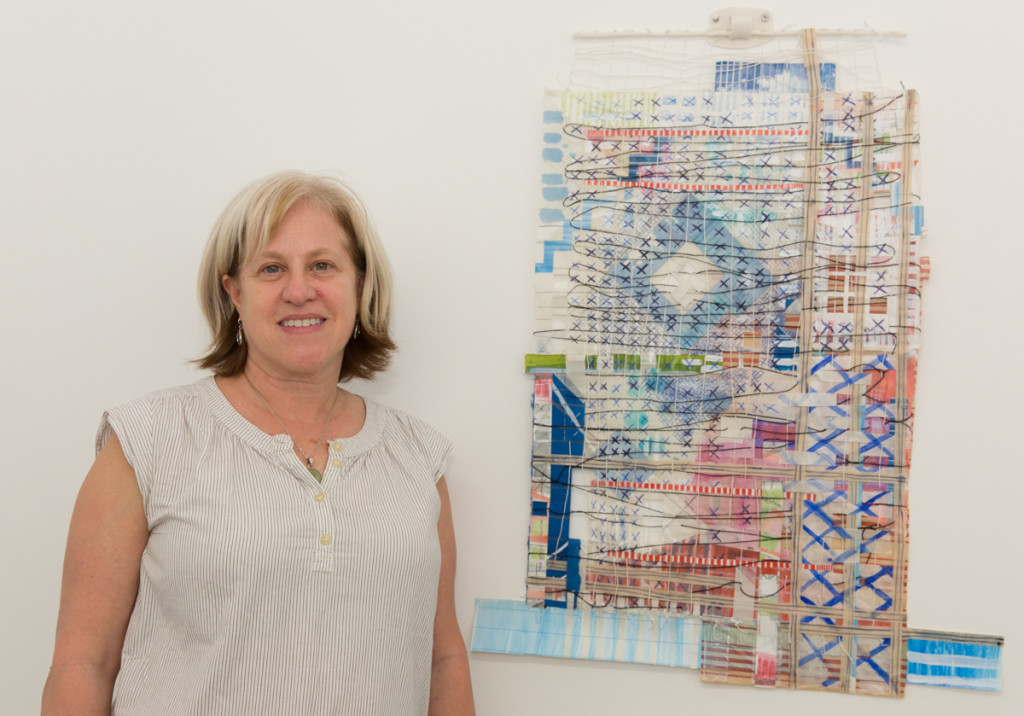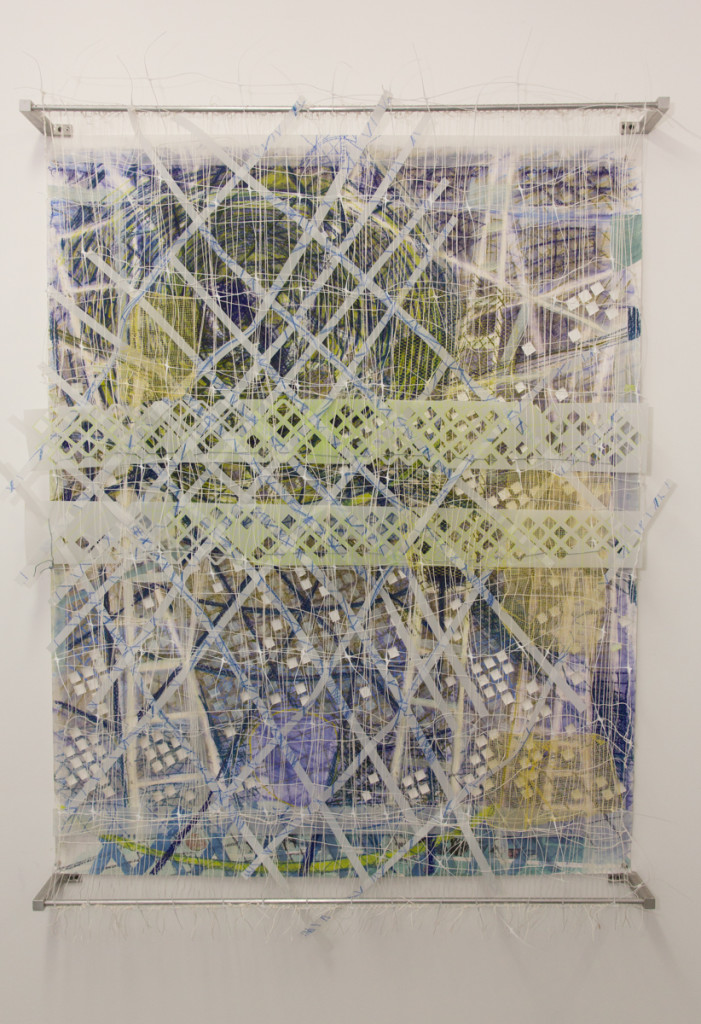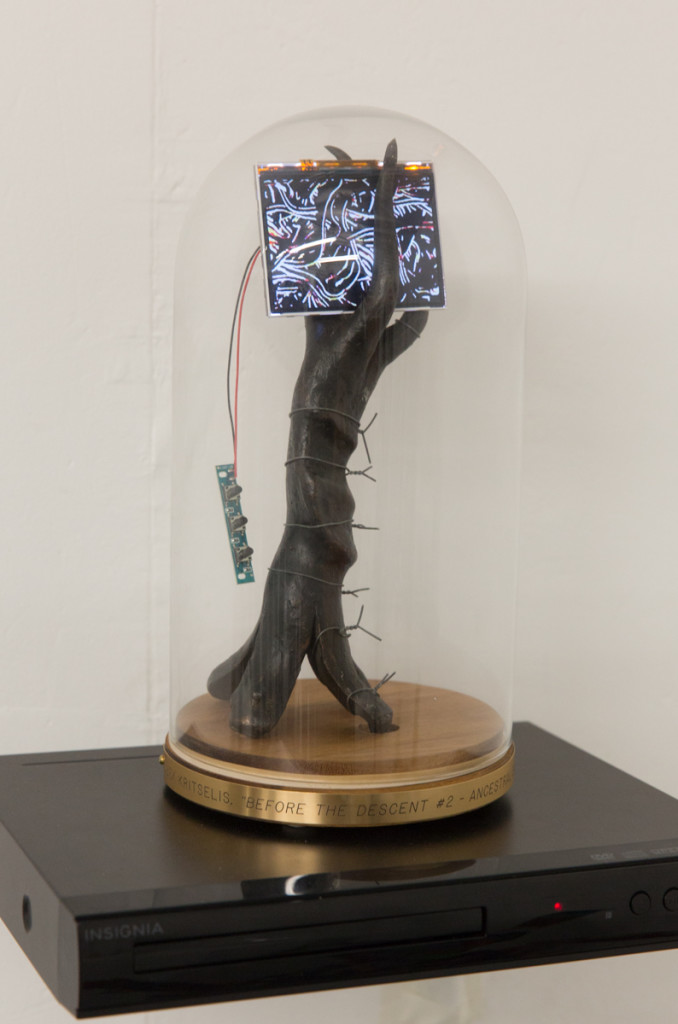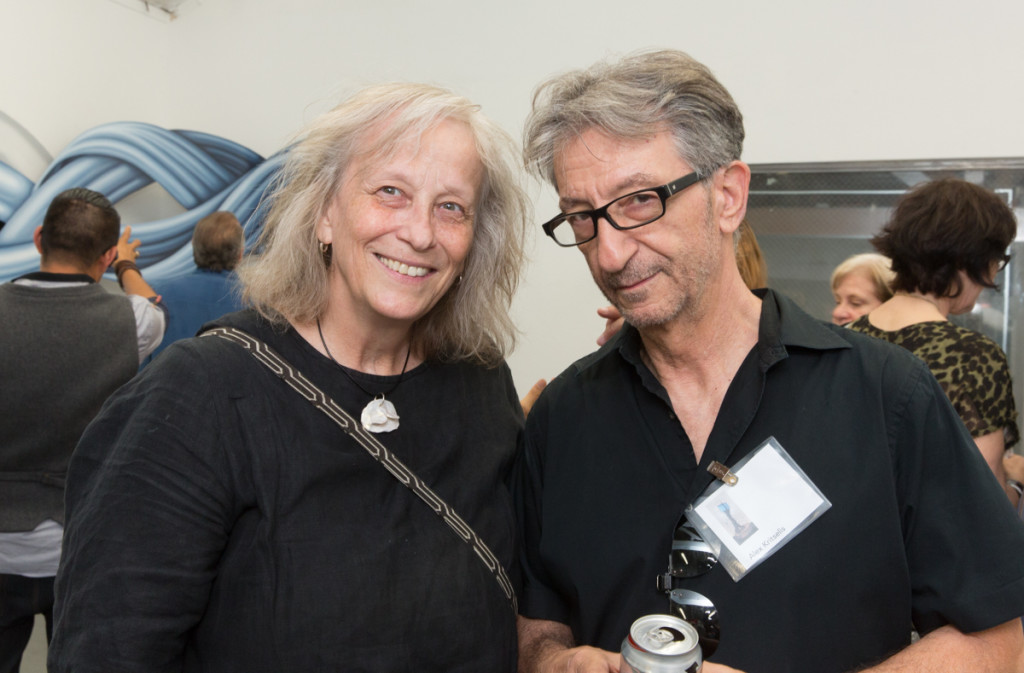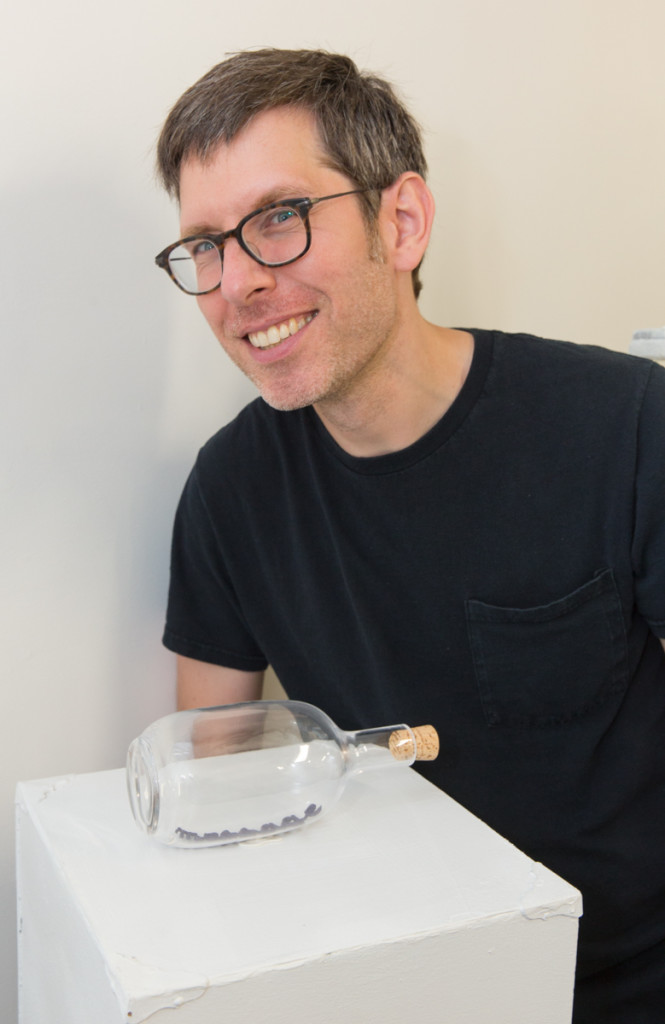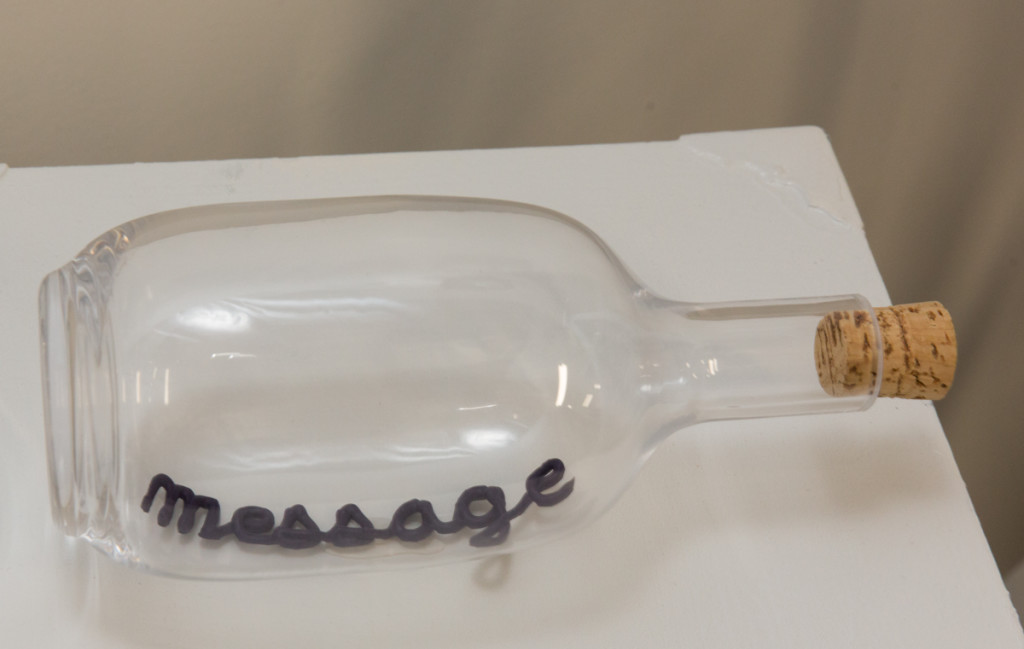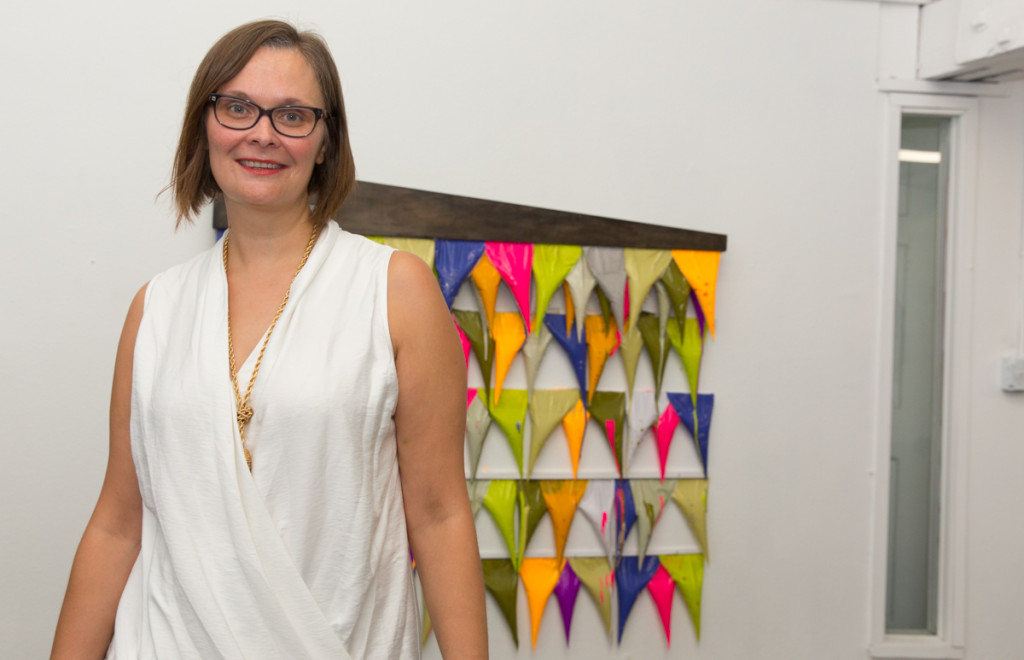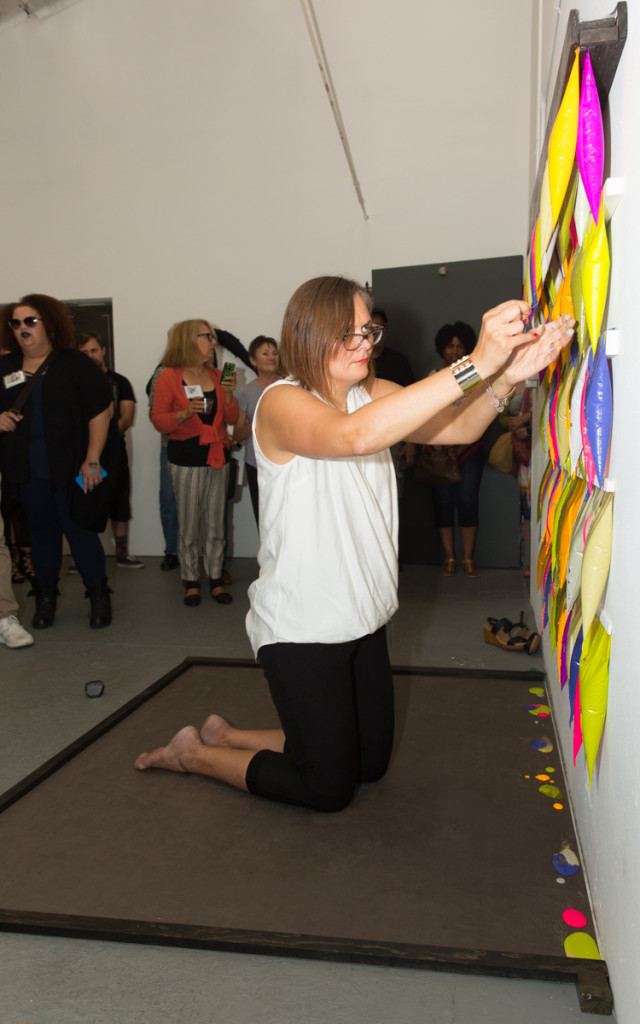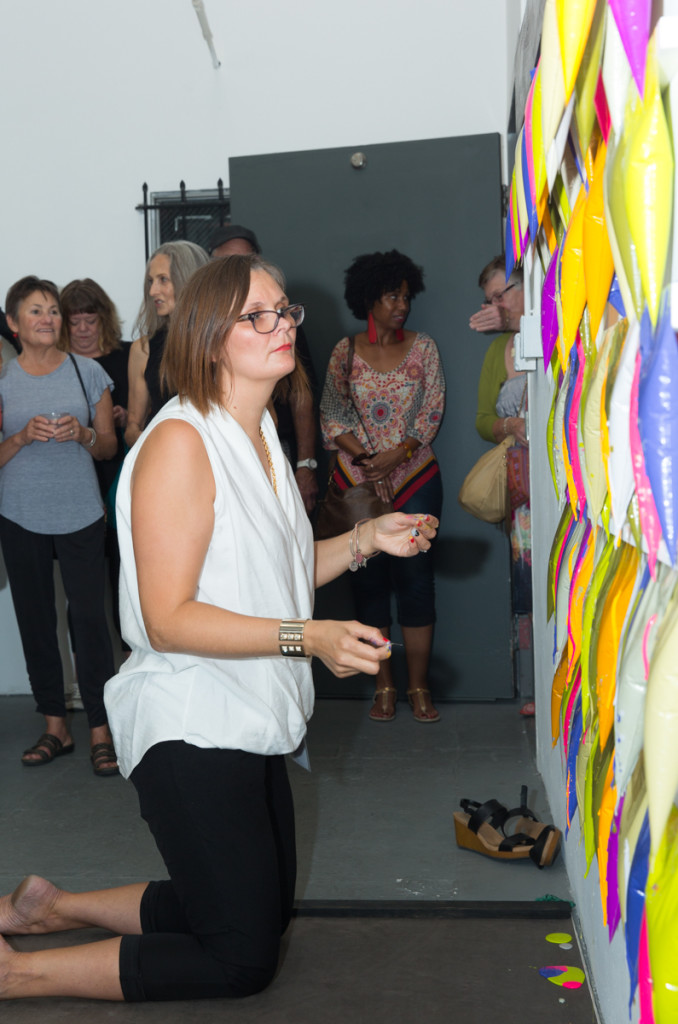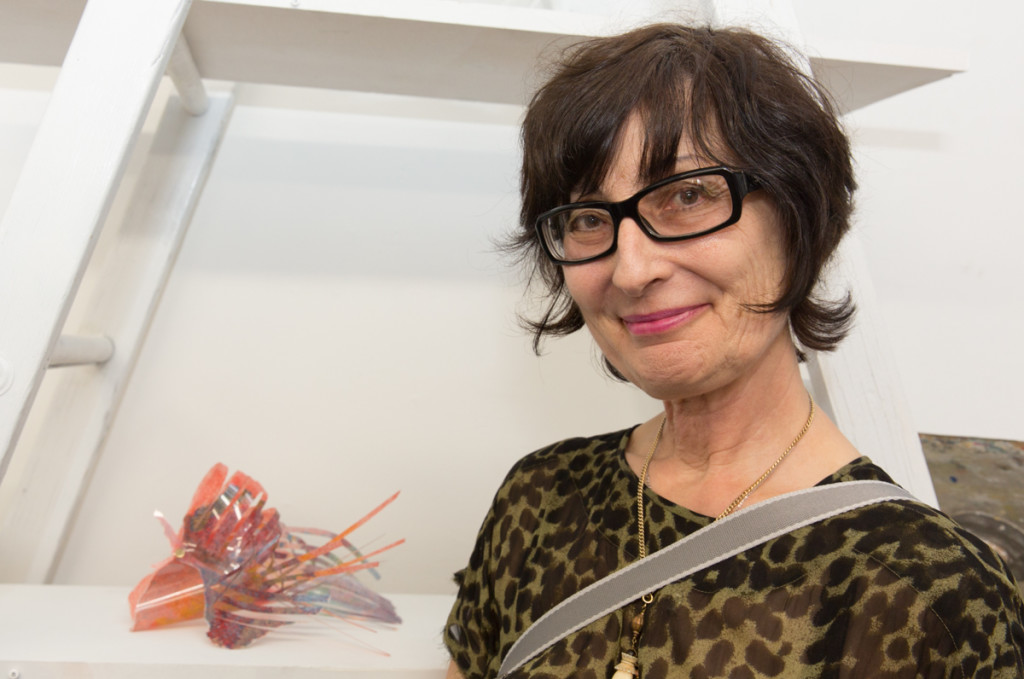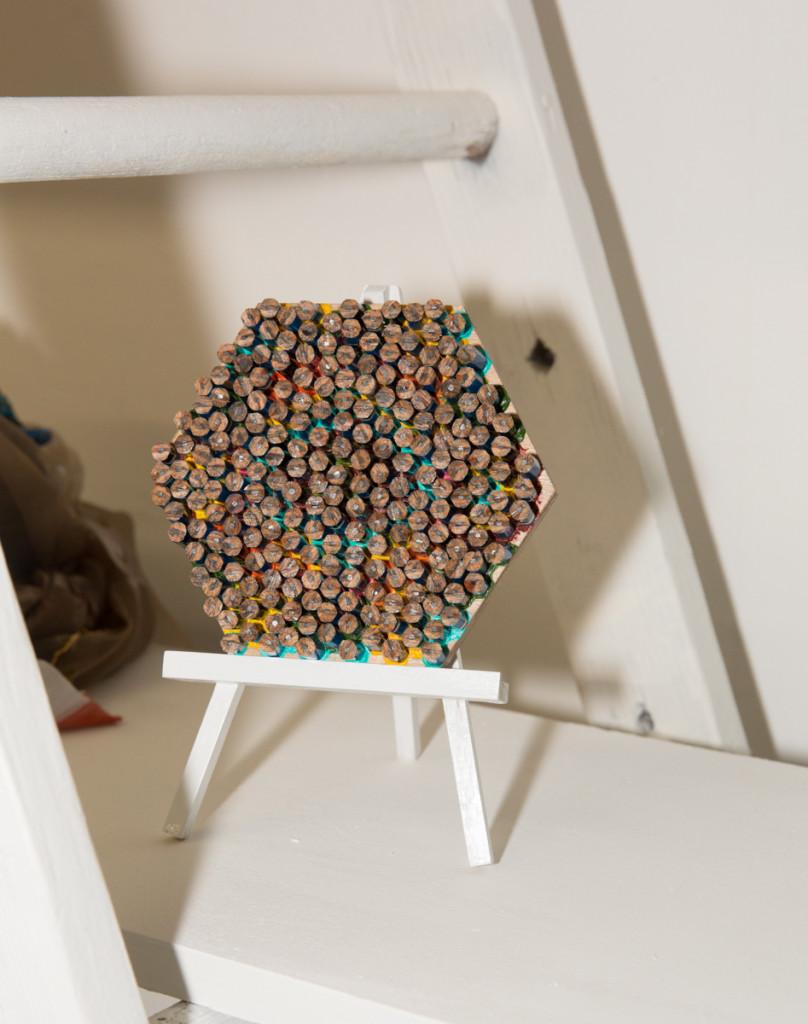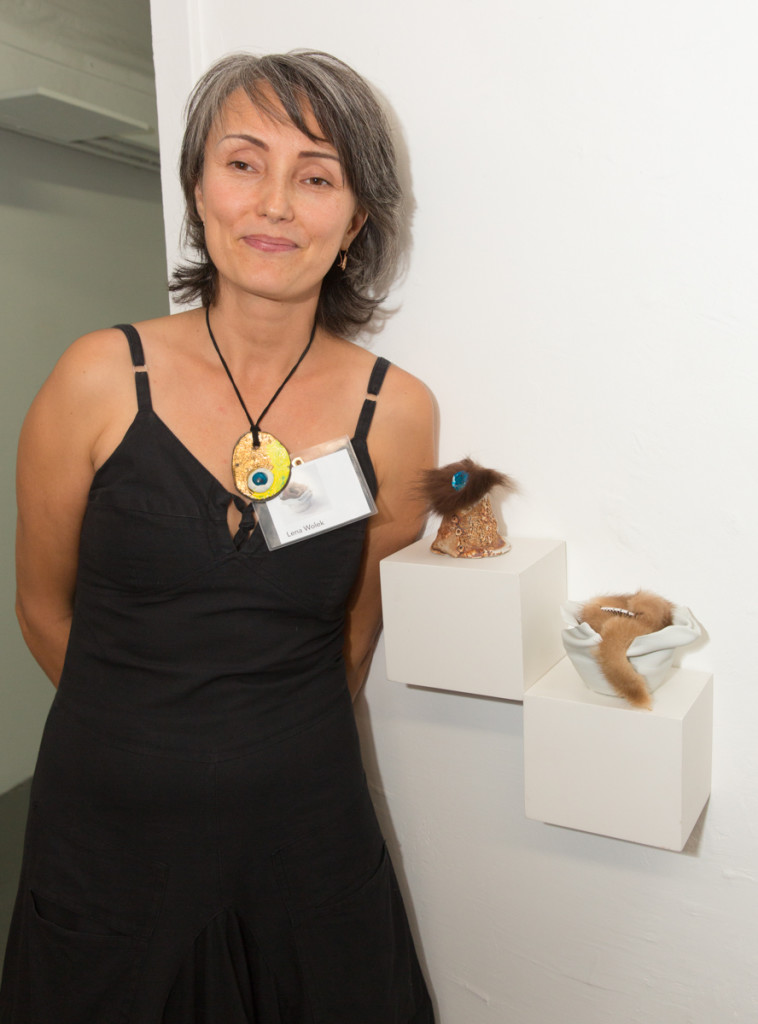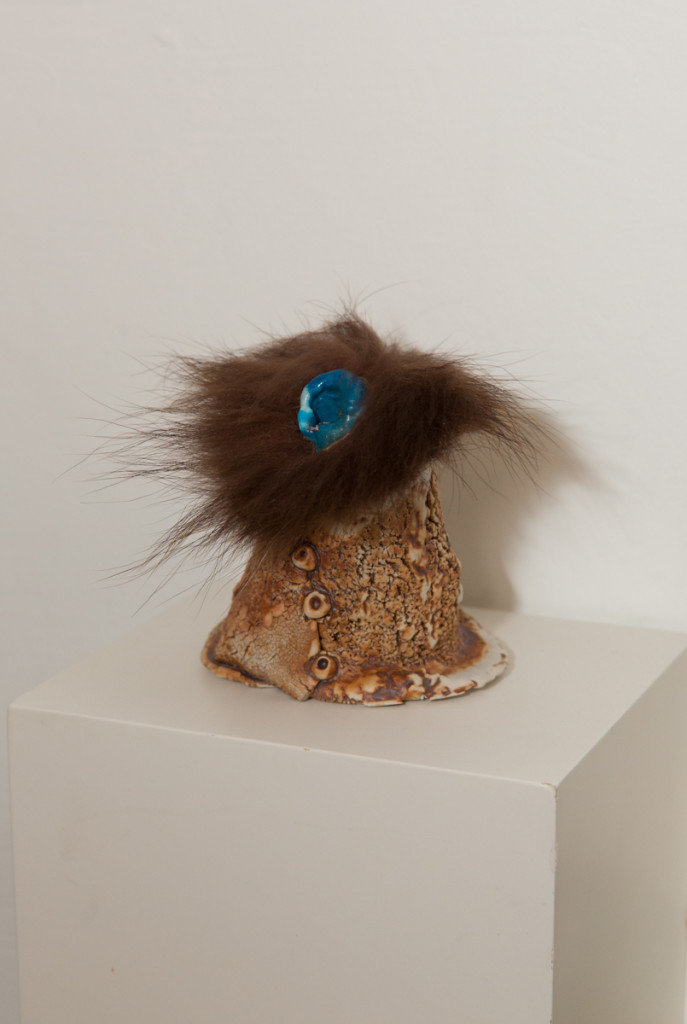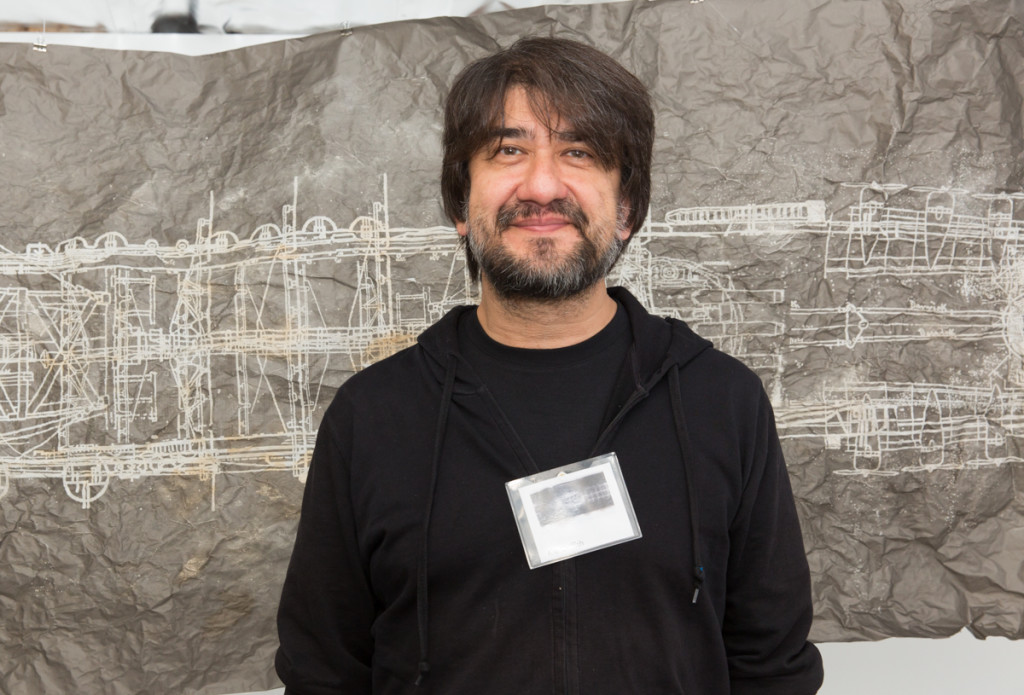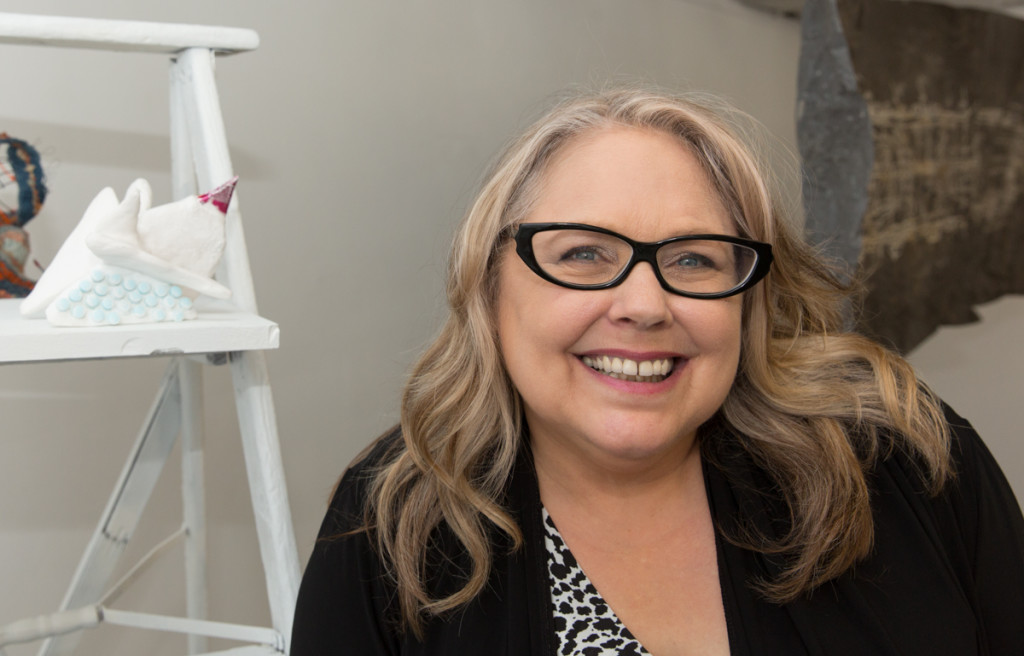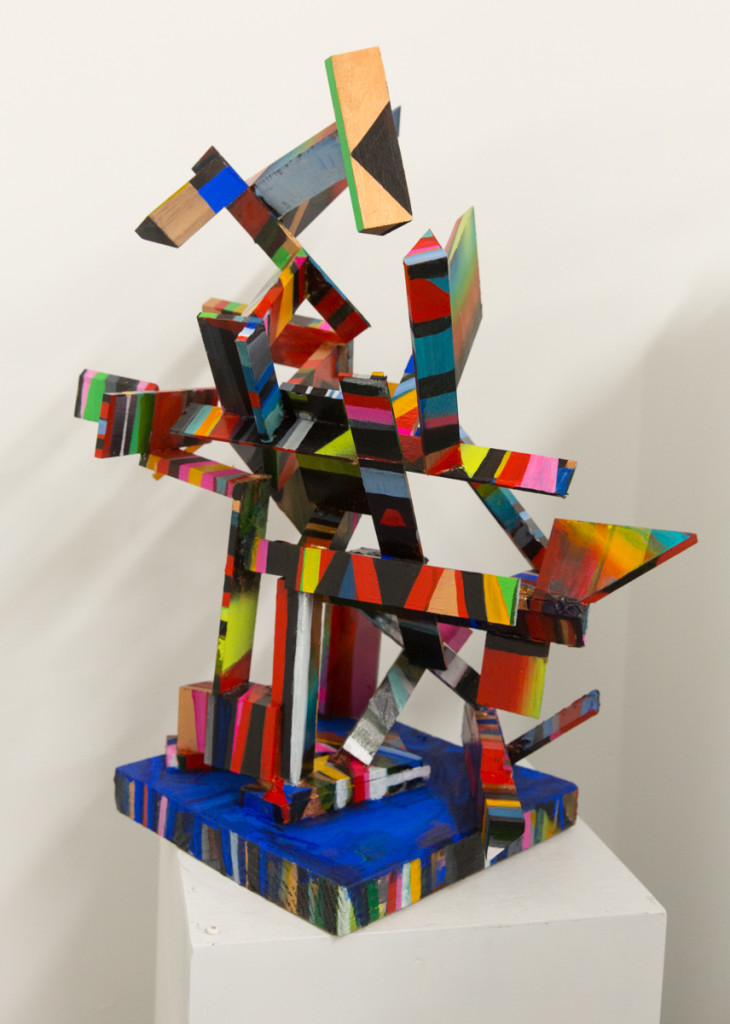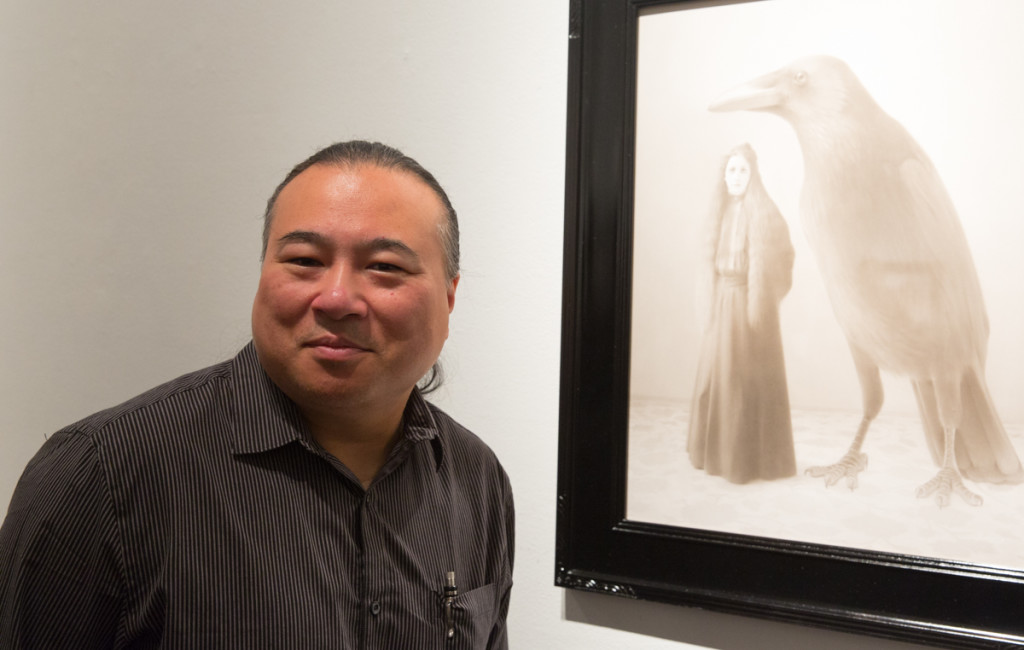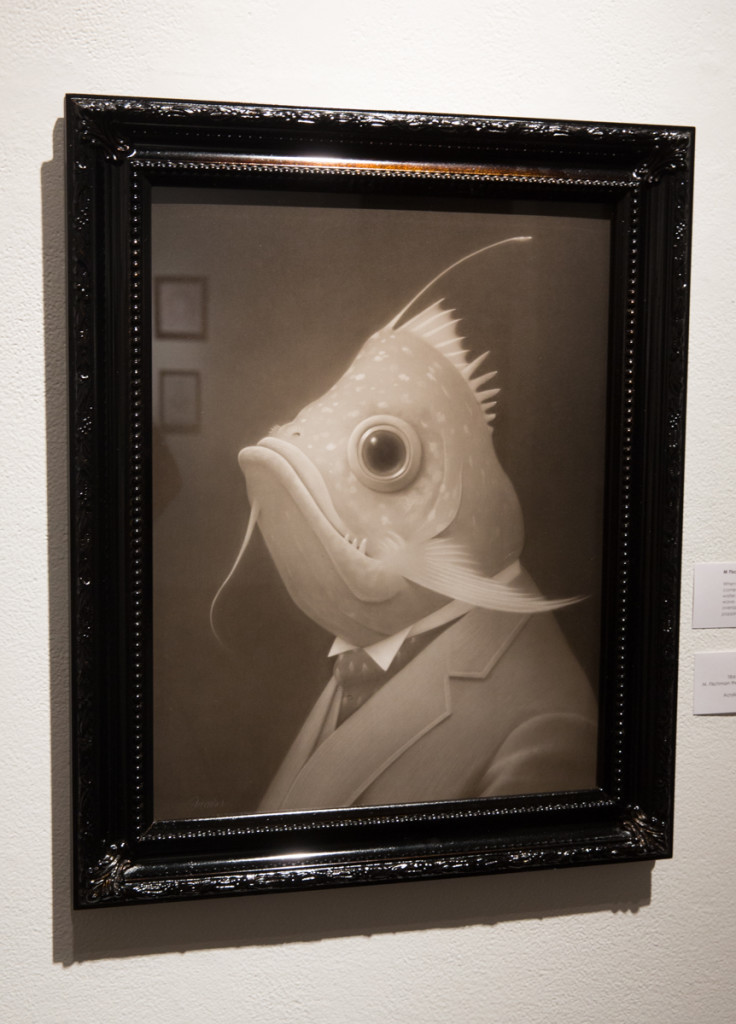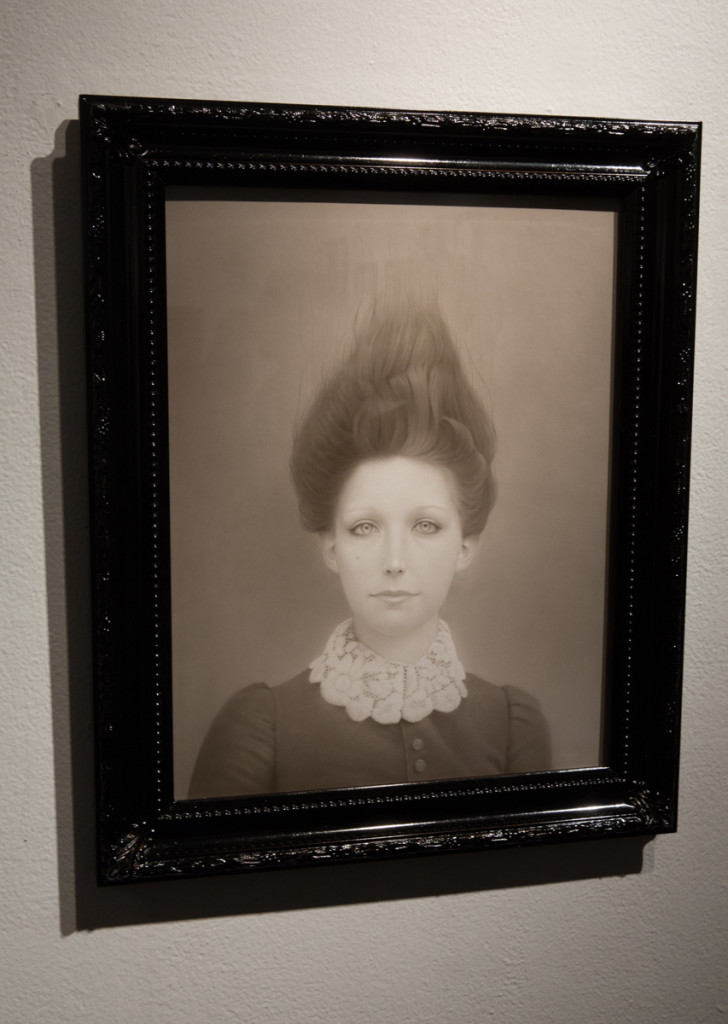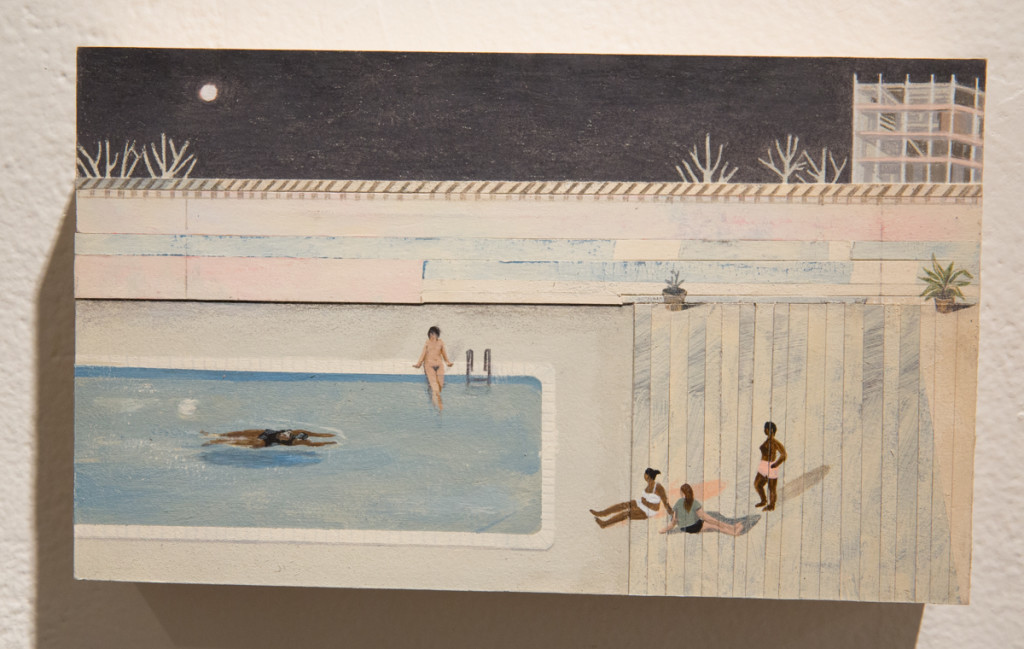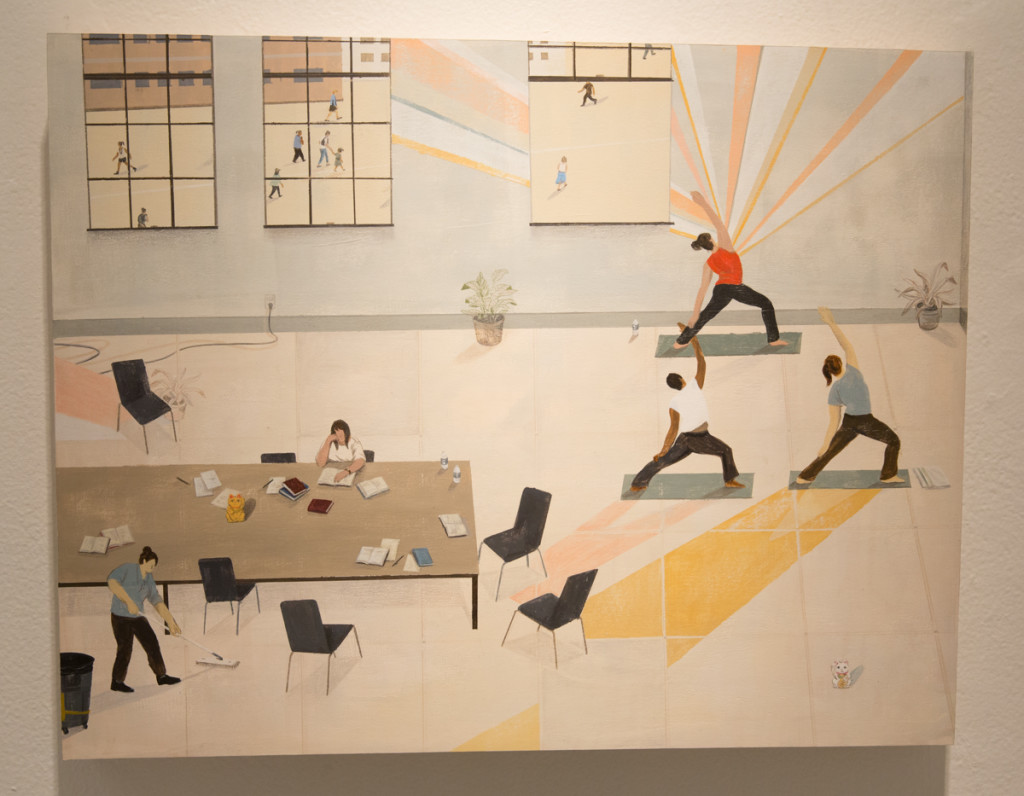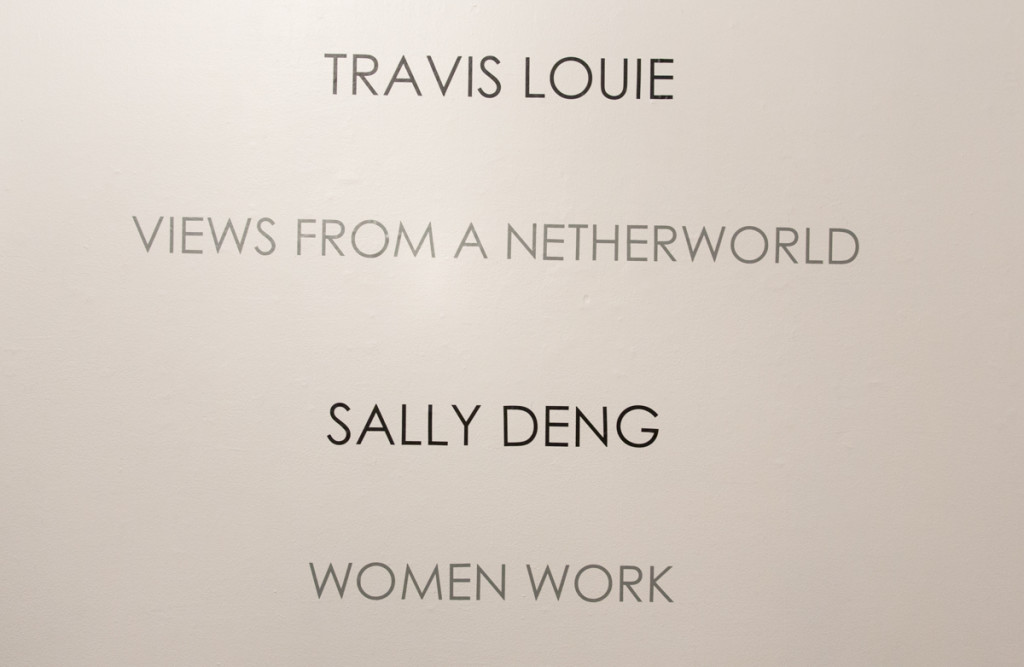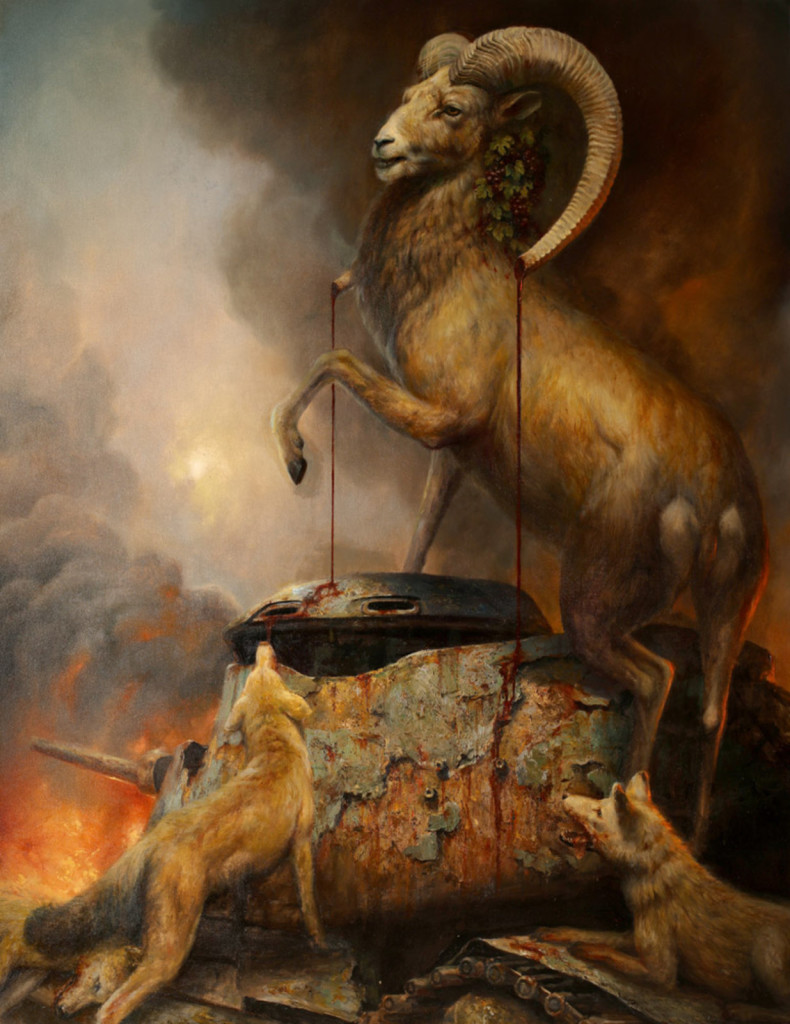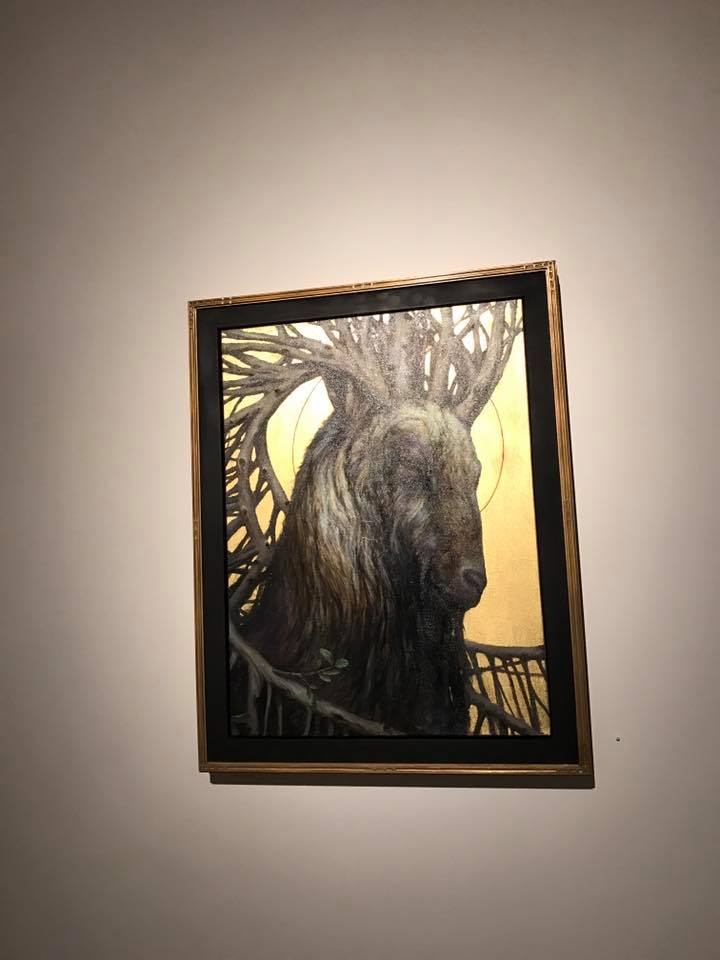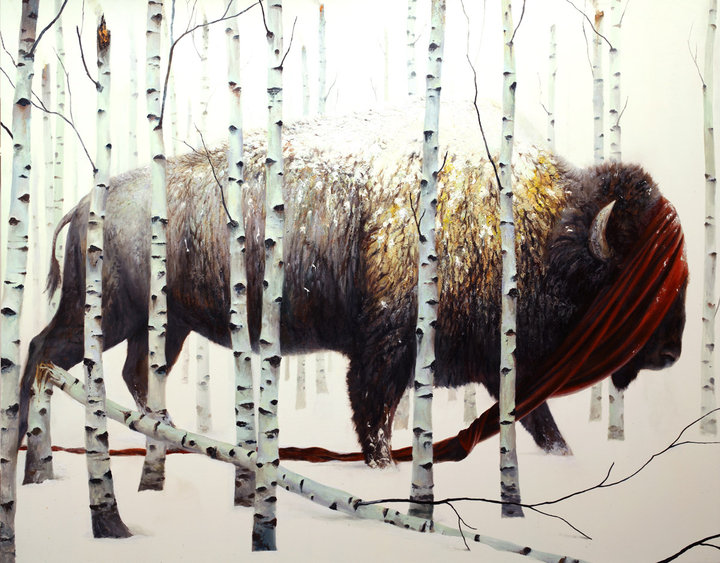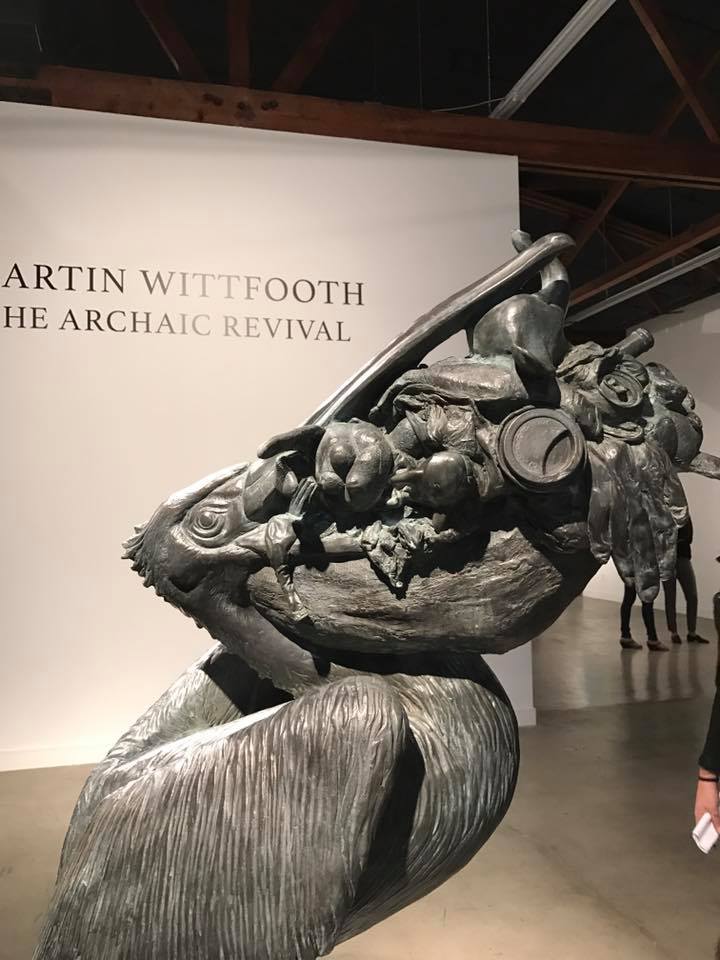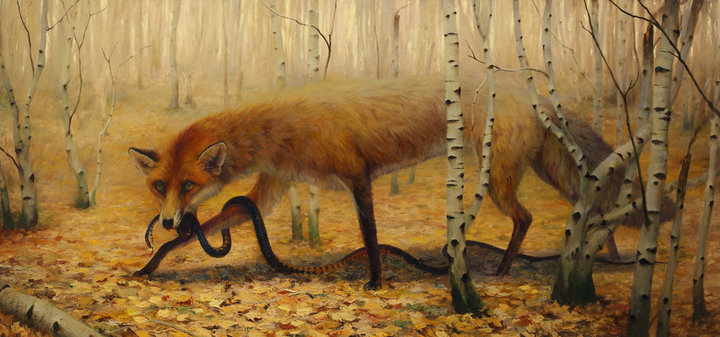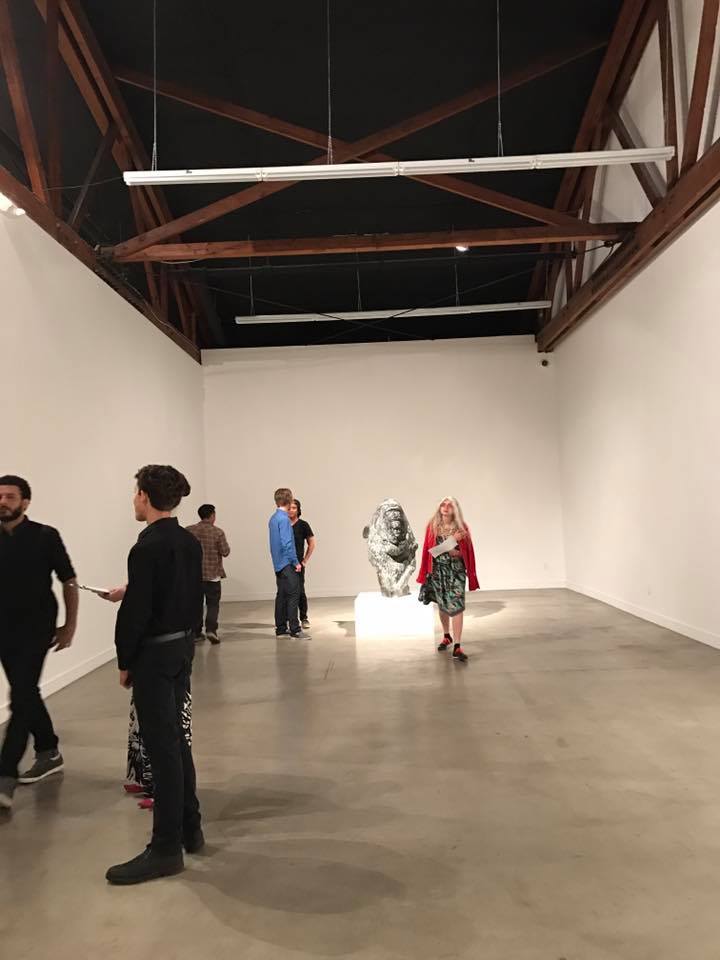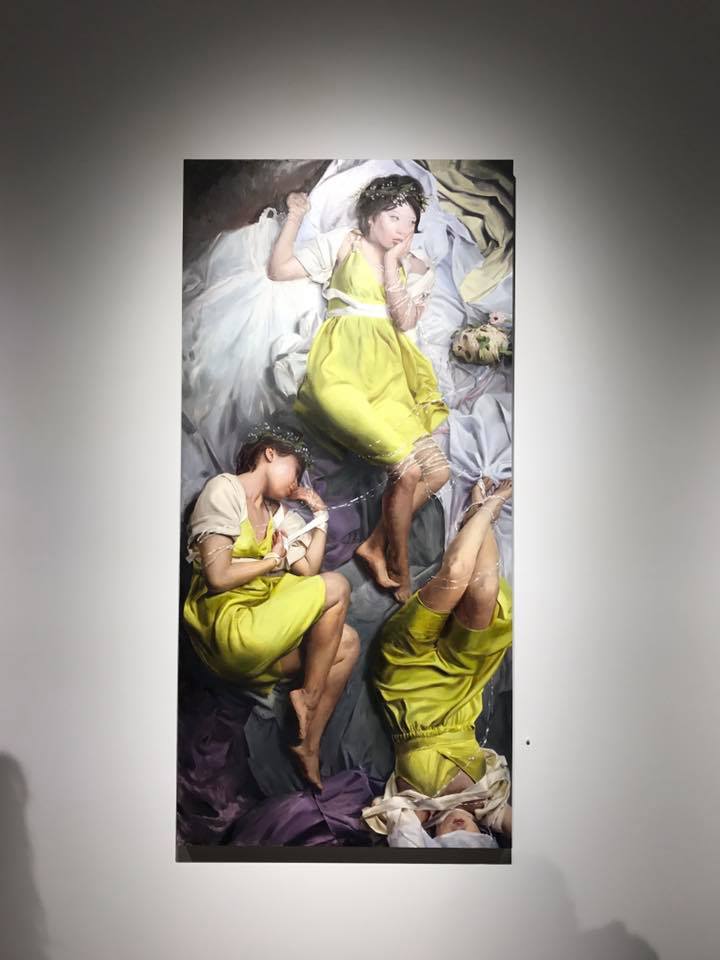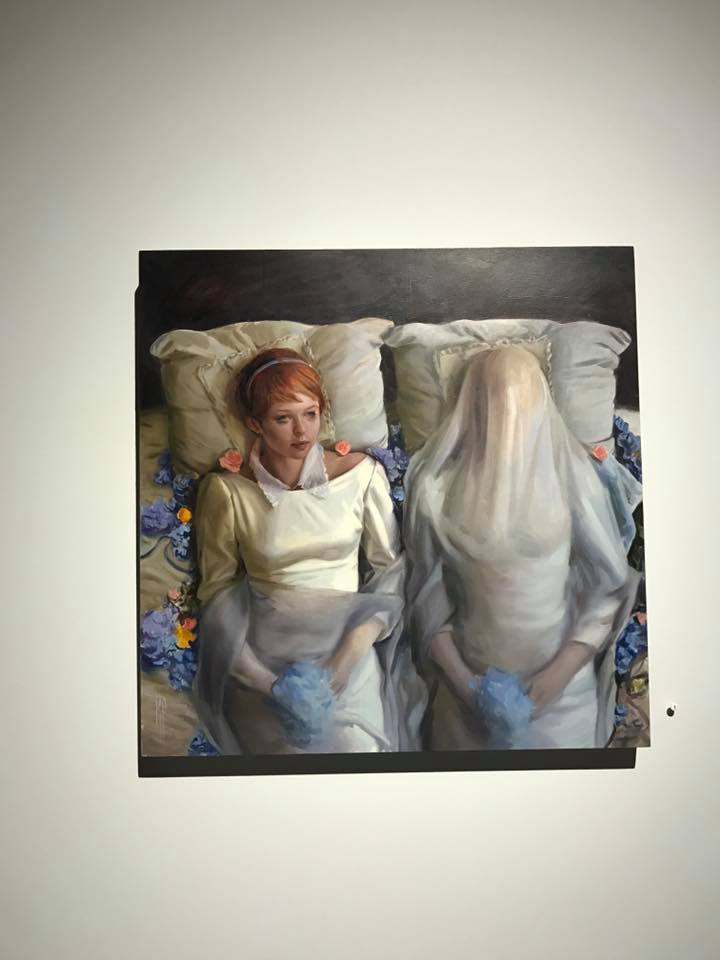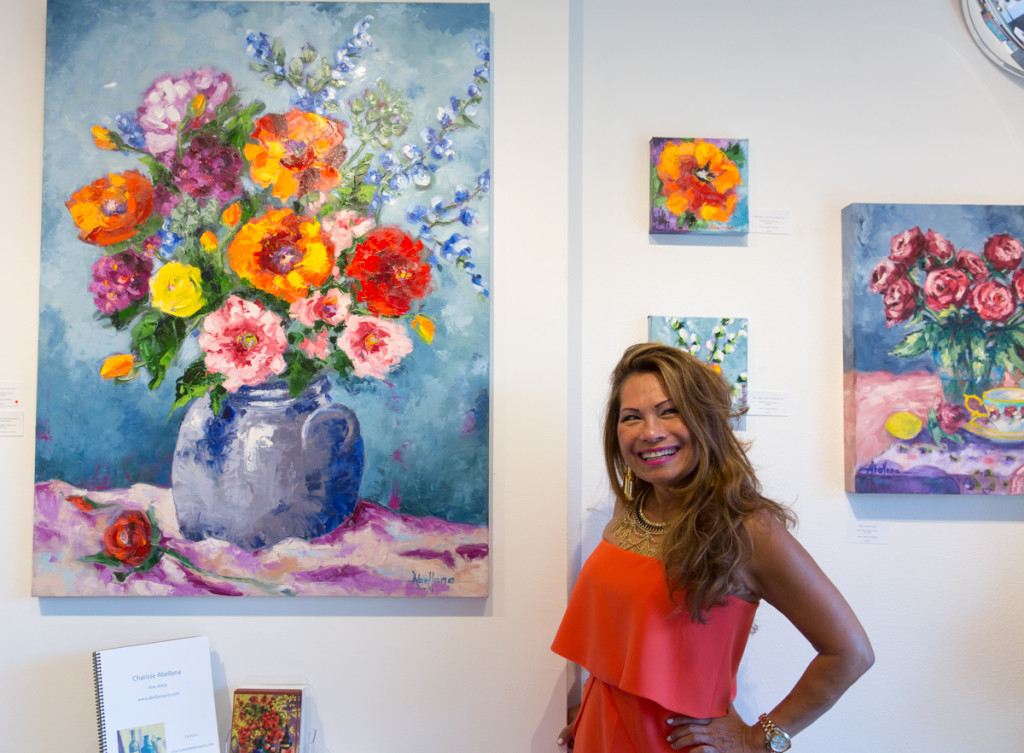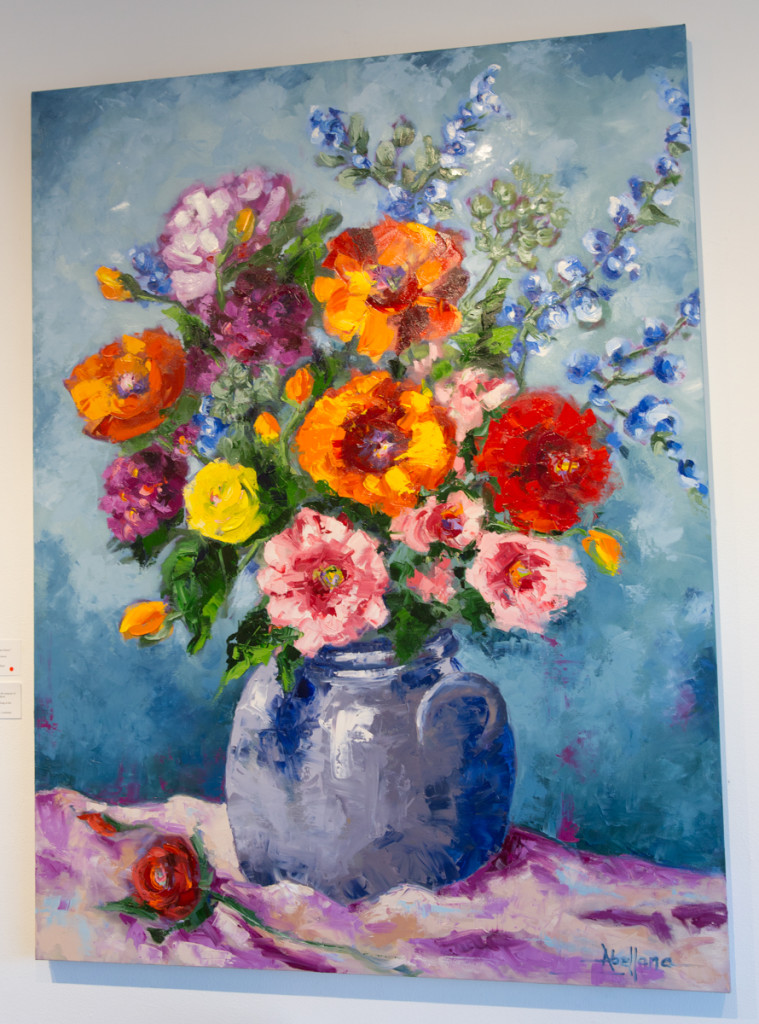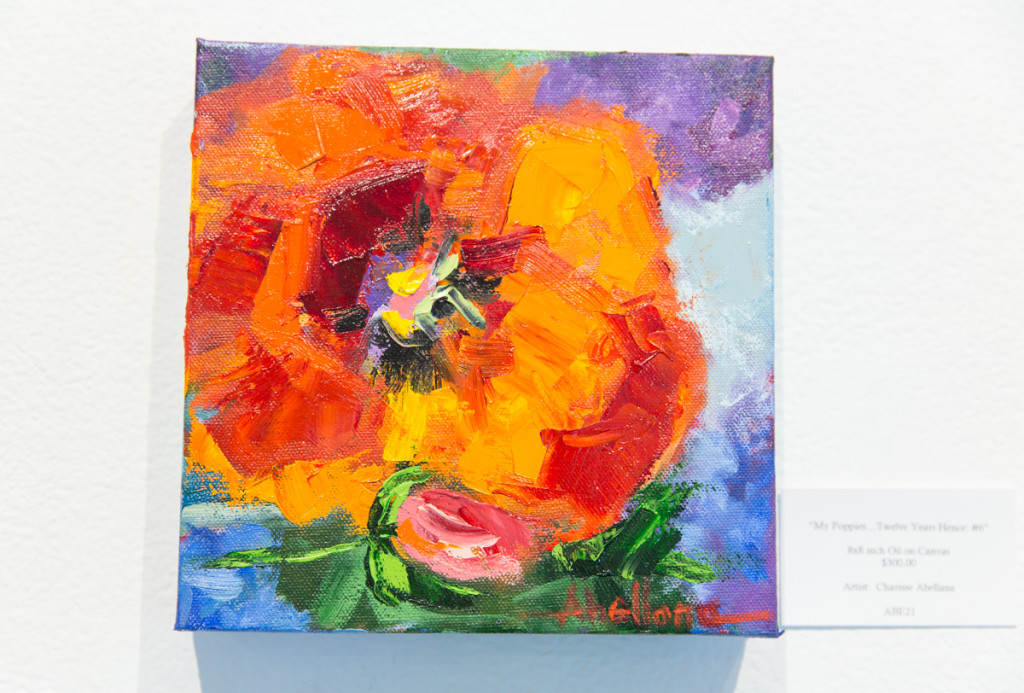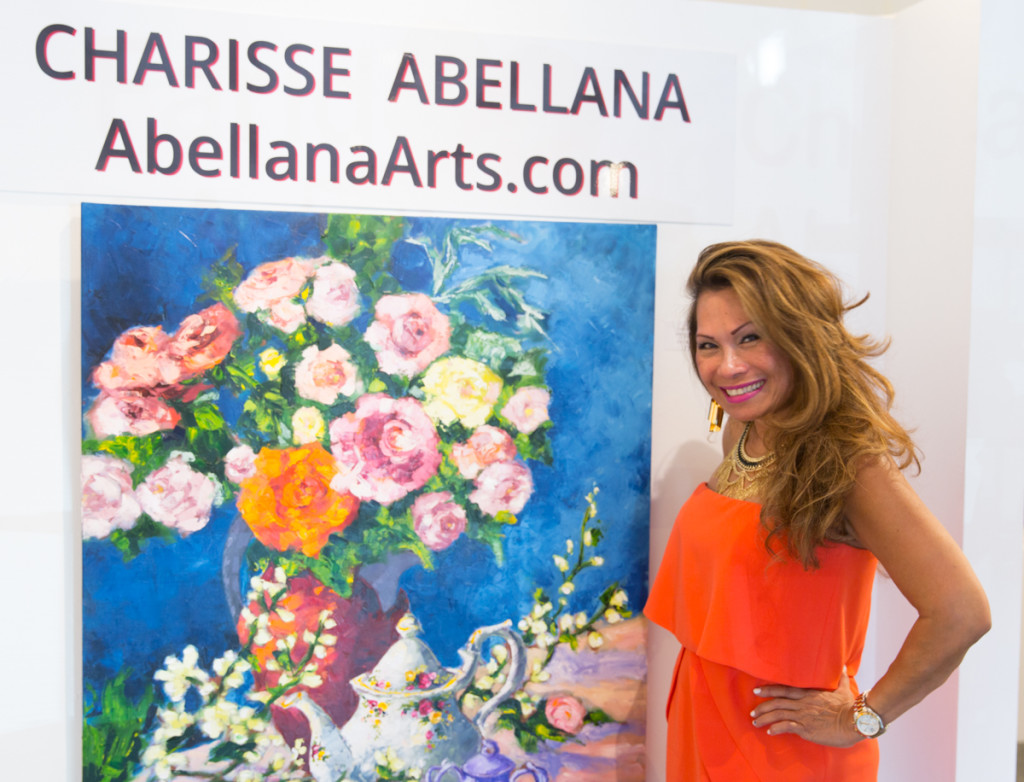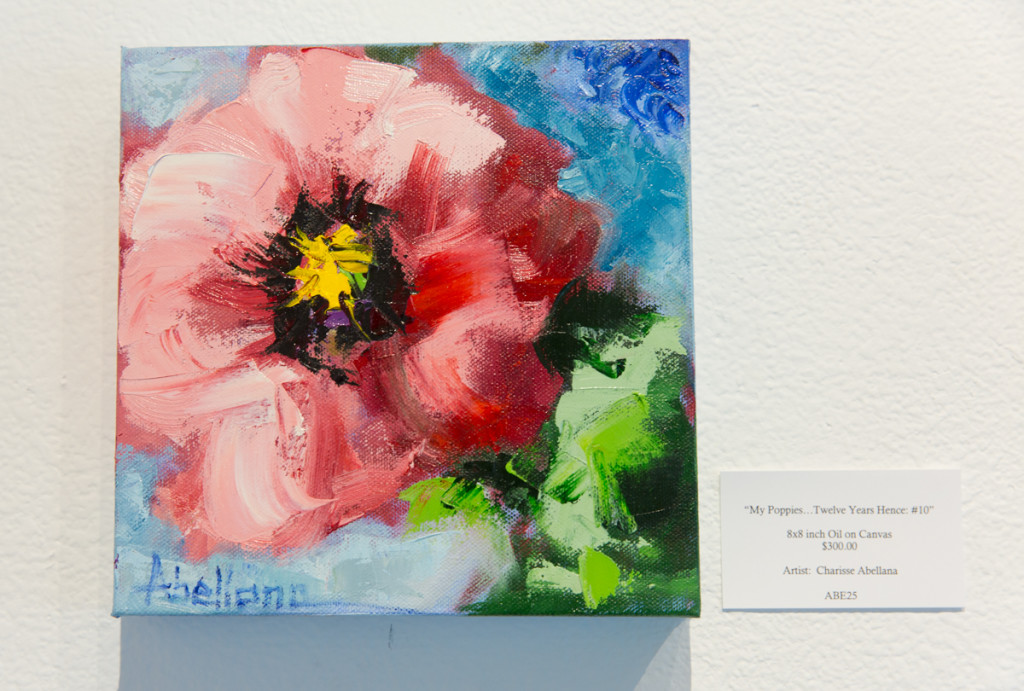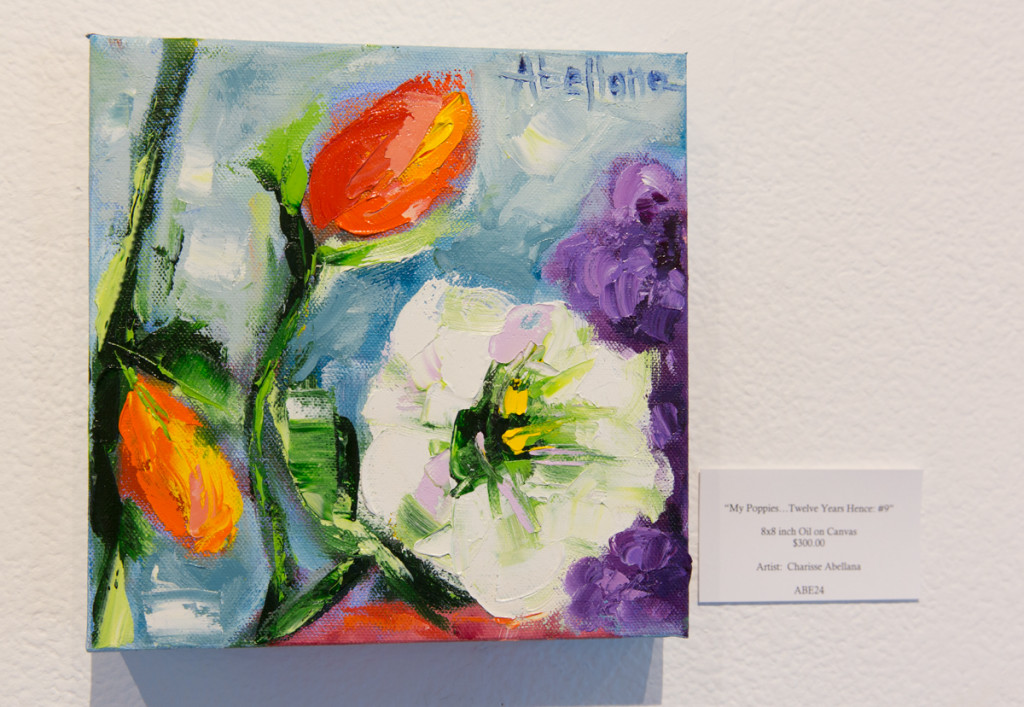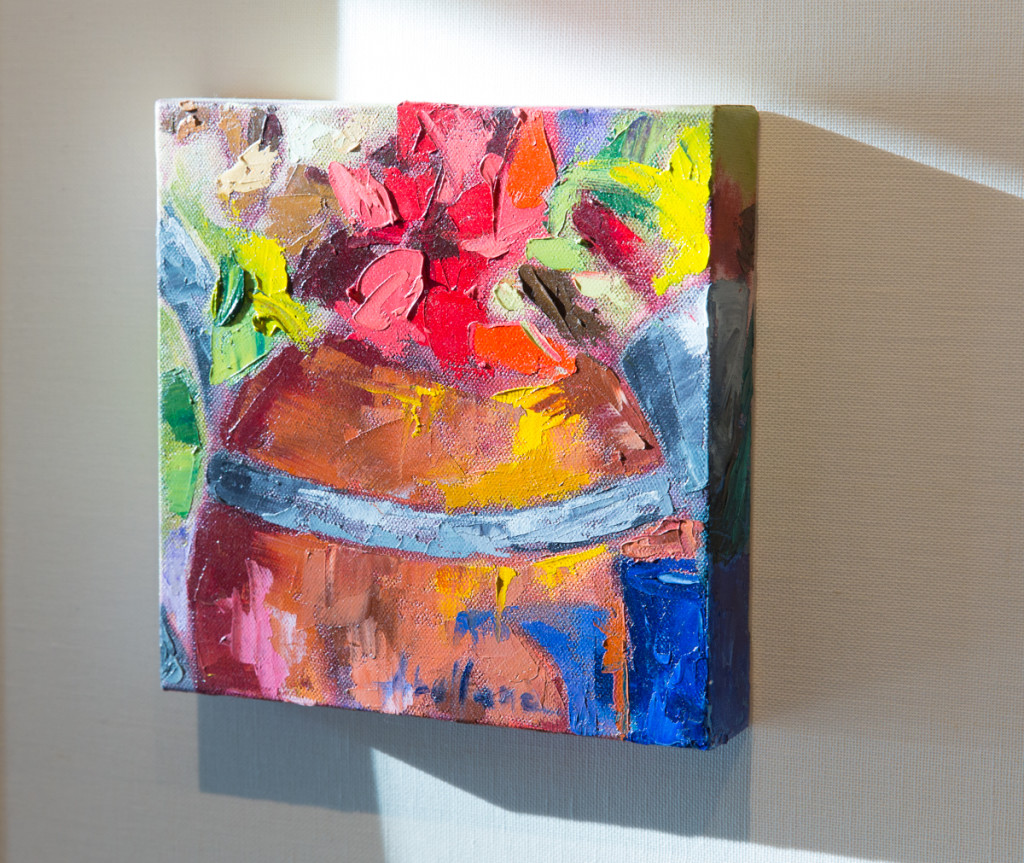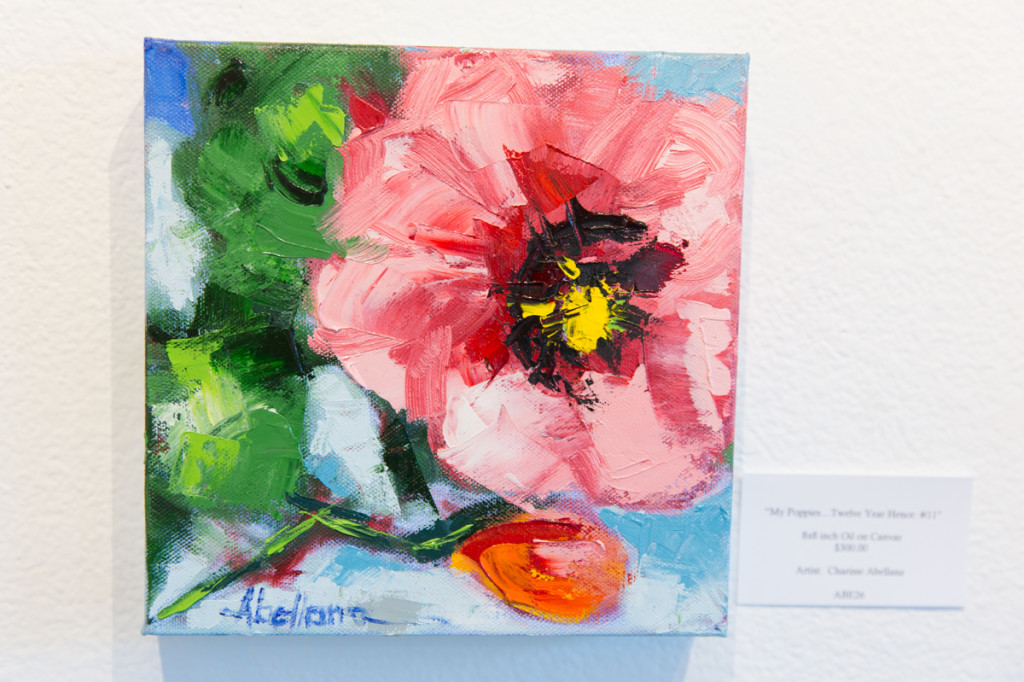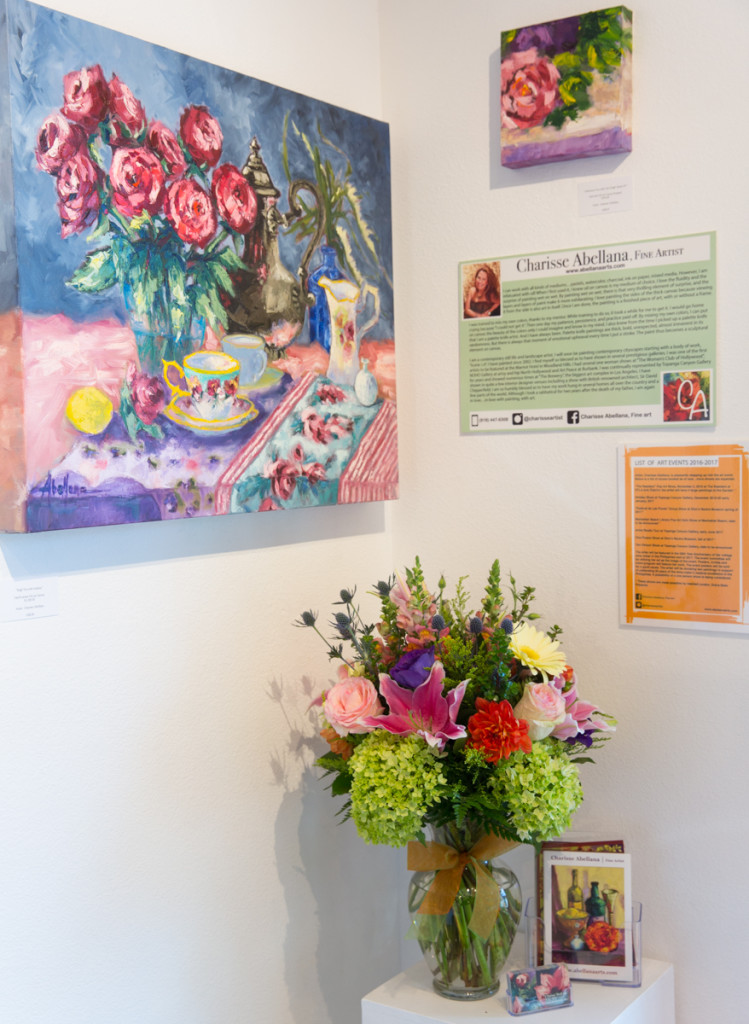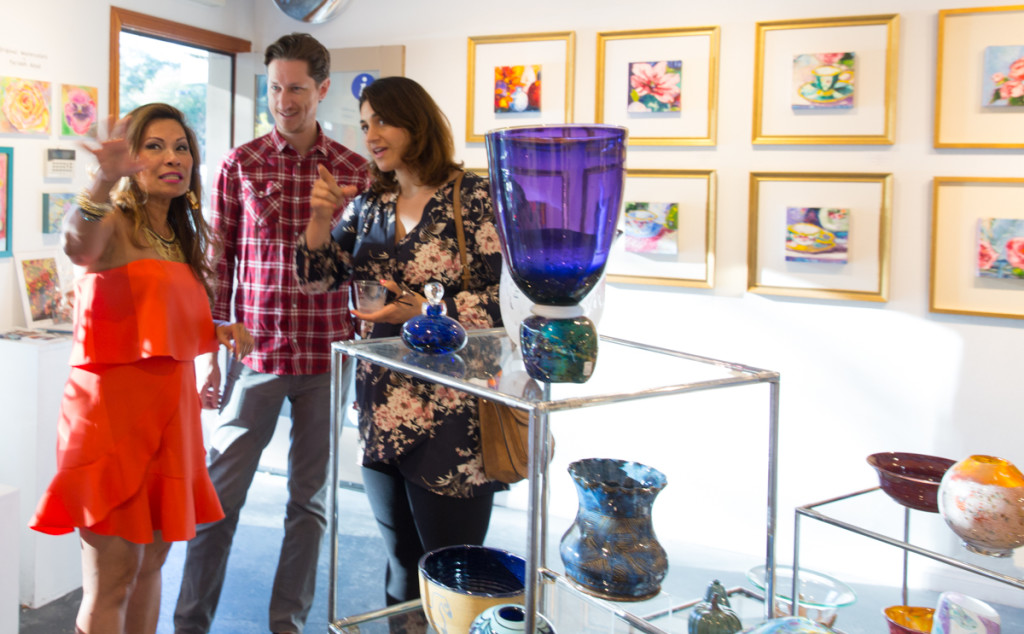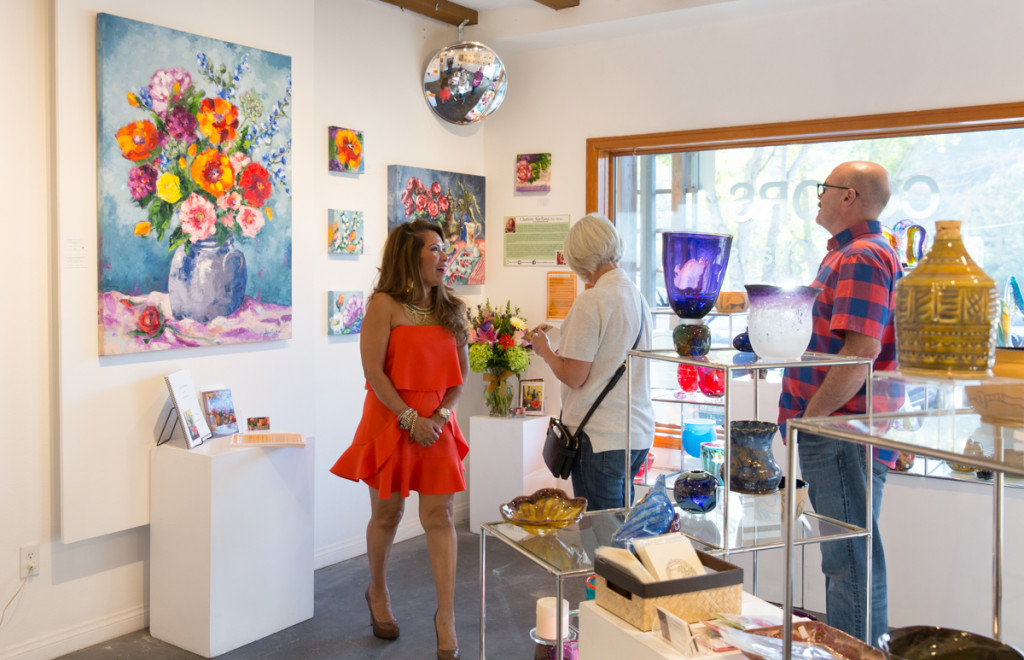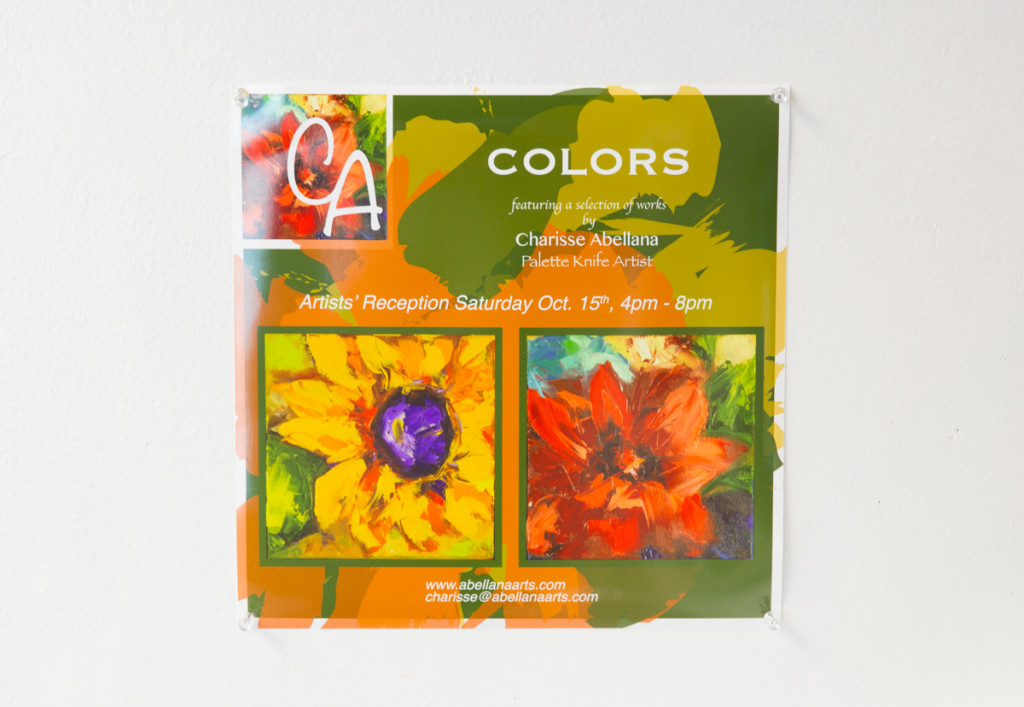Above, curators Dani Dodge and Alanna Marcelletti
BLAM is always the place to be for edgy, interesting work, and that is certainly the case with the current exhibition, where the artists works are clearly their passion, filled with creative intensity palpable to viewers the moment they enter the gallery space.
Shift and Fade, the latest exhibition at the always fascinating BLAM – Brooklyn Los Angeles Meet space in DTLA is a vibrant mix of large-scale installations and 21 small sculptures. One of the most fascinating aspects of the exhibit is the fact that quite a few of the artists participating with sculptural works have worked in 2 dimensions only previously.
Above, artist Tom Dunn with a piece from his series based on a fascination with film memorabilia. The piece is titled Margot Robbie Panties Infused Vodka.
The dimensional aspects are certainly not the only part of this absorbing show that merits consideration: curated by Dani Dodge and Alanna Marcelletti, the artists here were encouraged to use their works as emblematic of their personal identities.
Erika Lizee dazzles with a 12 foot site-specific sculpture that is partially created on the gallery’s wall space; Fran Siegel’s woven drawings fill the back room, Hugo Heredia Barrera works with a dazzling display of fused glass and wire. Using unusual materials and common ones, the artists present a cumulative exhibition on identity and the way in which such identity shifts with time and in the process of creation.
Everywhere one looks, there is a different, glowing piece.
Hugo Heredia Barrera says he has worked in glass for over 25 years. “My idea is to exploit glass in very different ways fusing with wire cable. I untwist the wires and fuse them between glass inseide a furnace, shape it, drop it on the ground and hammer it. This piece is from a series called Floating Souls. I work in light and shapes.” The artist notes that whenever he is asked to do an installation he visits the space and plays with the idea of light and shape. “I hung this piece from the ceiling beam here, if I had other beams I would have expanded it differently for the space.” Heredia Barrera created his art form initially accidentally when a piece did not turn out as it had planned and he threw it in the dumpster, it fell and broke. That fortuitous accident led to the creation of his unique artworks now.
Alison Woods also hangs her work here from the rafters. “I’m really a painter, but Dani carried me into the show and said I had to make a three dimensional sculpture. It’s the Greek goddess Ares, the goddess of discord, and element from a painting. I used paper mache and acrylic paint. It seemed like something I could do, remembered from my childhood and lightweight enough to paint and hang from the ceiling.”
Kristine Schomaker cut up eighteen years worth of paintings using a box cutter to create her rich and evocative stacked work. The act of cutting and altering past works is something of a overall transition for the artist. “The paintings here were cut to be 12 x 12. My work lately has been about reconstructing beauty, so I wanted to approach the cutting here almost like plastic surgery, reconstructing something that was beautiful before I started.”
Erika Lizee painted the blue portion of her stunning sculpture in her studio, on clear artist-grade acetate. The grey portion was painted directly on the wall at BLAM. “It took two days. I start with a big drawing and cut the acetate into dual shapes,” she relates. Titled “Seed of Life,” the piece “ties into sacred geometry…representing the time before you’re born and the tangible versus unintelligible, what happens to us before birth or after death.” The piece appears to go inside the wall, a physical manifestation of the mysteries she is presenting thematically in this unique and beautiful piece.
Fran Siegel created her works entirely of paper. “They are all about locations and reconfiguring drawing as a way to take things apart and put it back together. There are a variety of perspectives and moods. All three pieces were created based on three different continents, with different vantage points and reconstructions.”
Alex Kritselis created a gorgeous video piece. The diminutive work is hardly small in scope, revealing the image of a snake in the roots of a tree with a “video image manipulated to look like a line drawing. Originally the video used was a close up of a filmed snake pit,” the artist explains. The piece is evocatively titled “Before the Descent. ” A revelatory piece.
Steven Wolkoff wrote a word – message – in acrylic paint and placed it inside a glass bottle. “It’s like putting a miniature ship in a a bottle, the word is a little bigger than the opening but it bends, requiring some time and patient. It needs to be wet enough to bend but not too wet.”
Beatrice Wolert created a live work. The Brooklyn-based artist used plastic cake decorating bags containing paint to create brilliantly colorful “living” sculptures. Puncturing the plastic, the drips on the ground covering below that will firm up in consistency over the course of the exhibition she considers to be “representing Los Angeles as the paint forms on the ground.” Beautiful to see it as it happens and to see the end result. “I am using paint as a symbol of the artists in Brooklyn and Los Angeles. I enjoyed filling up the bags, the process of filling. The colors are the colors of nature using the Pantone matching system. They’re memories of a sumer garden in bloom. I studied the plants in the Bartow Pell Museum,” she relates. “The color matching system is based on the colors of bird feathers.”
Nadege Monchera Baer took some of her drawings, laminted them, cut them. The resulting work resembles a sea creature. “It was in my studio, I drew it on dualar and I assembled it.” The untitled piece inspired the artist to create other pieces in a similar fashion. “I want to do more of this, laminate different drawings. I love the possibility that the door has maybe opening to doing something else with my work.”
Jennifer Celio created a sculpture using “all of the pencils I’ve used in the last ten years. I couldn’t bear to throw away the stubs. My dad did the same thing, he had a jar of pencil stubs. There are 360 stubs in my piece that includes a wood panel and acrlic paint to create the hexagon pattern. I’m glad I saved them all those years, I wouldn’t get of them, and now I’ve made art from them.”
Lena Wolek created sculptures that utilized different parts of her background. Fur which is an important survival aspect of life in her birthplace of Siberia, porcelain that “represents a porcelain factory that five generations of my family worked in.” As always, this chameleon-like artist works in materials we have not seen her create in previously. Her versatility is matched by her ability to create beauty from diverse materials.
Co-curator Alanna Marcelletti created a piece that expresses her self-transformation into a mother. “The figure is carrying sage because you become a shaman as you become a mom. It’s a full circle piece linking a period from my 20s to now.”
Kio Griffith employed blueprint film found in Japan in an area affected by the tsunami. “It’s part plastic, part paper, treated with bleach that east away at the plastic to reveal the paper. The double image is about my heritage which is half Japanese,” he asserts. “It’s about a story I got fro my mother, in which my grandfather, in the Japanese Imperial Navy was in the same battle as my uncle in a submarine. On the same battleground, my grandfather shot at my uncle. I’m combining the different blueprints of these different ships from different nationalities, depicting an area where lines meet…” and lives intersect.
Co-curator Dani Dodge incorporates Tab cans and sleeping pills in her work. “The piece is talking about when I was young, and I never expected to live past age 23, and when I did, I had to make decisions about my life. I had a difficult time as a young person and a single mom, and had a lot of unexpected things happening in my life. So many people think about chucking it all when there are so many adventures ahead. You can live through troubled times and have incredible adventures, you just have to know it’s going to get better. This is a piece saying it really does, even when you might think it won’t happen,” she attests. “As more curator than artist here, I created this using materials as a metaphor for personal history. Everyone here had a personal stake in the show. I think that’s really what speaks to people here is something true and honest and beautiful.”
Other highlights includes a sculptural version of David Spanbock’s rainbow colored abstract work, above.
Exhibiting artists include: Nadege Monchera Baer, Hugo Heredia Barrera, April Bey, Arezoo Bharthania, Debbie Carlson, Paul Catalanotto, Jennifer Celio, Dani Dodge, Tom Dunn, Kio Griffith, Jenny Hager, Pete Hickock, Alex Kritselis, Erika Lizée, Alanna Marcelletti, Bhavna Mehta, Kristine Schomaker, Delbar Shahbaz, Fran Siegel, David Spanbock, Jesse Standlea, Camilla Taylor, Vincent Tomczyk, Joe Wolek, Lena Wolek, Beatrice Wolert, Steven Wolkoff, and Alison Woods.
Truly, honestly beautiful: that sums up Shift and Fade. Go see it before it closes October 30th. BLAM is located at 1950 S. Santa Fe Ave. #207 in DTLA’s warehouse district.
- Genie Davis; photos: the brilliant Jack Burke


